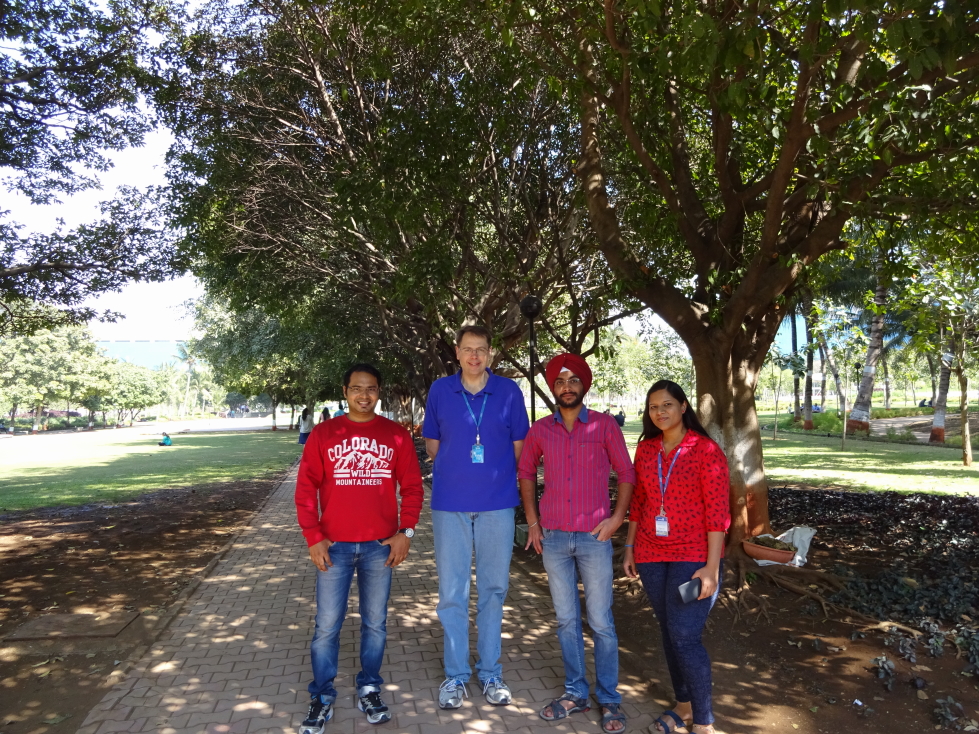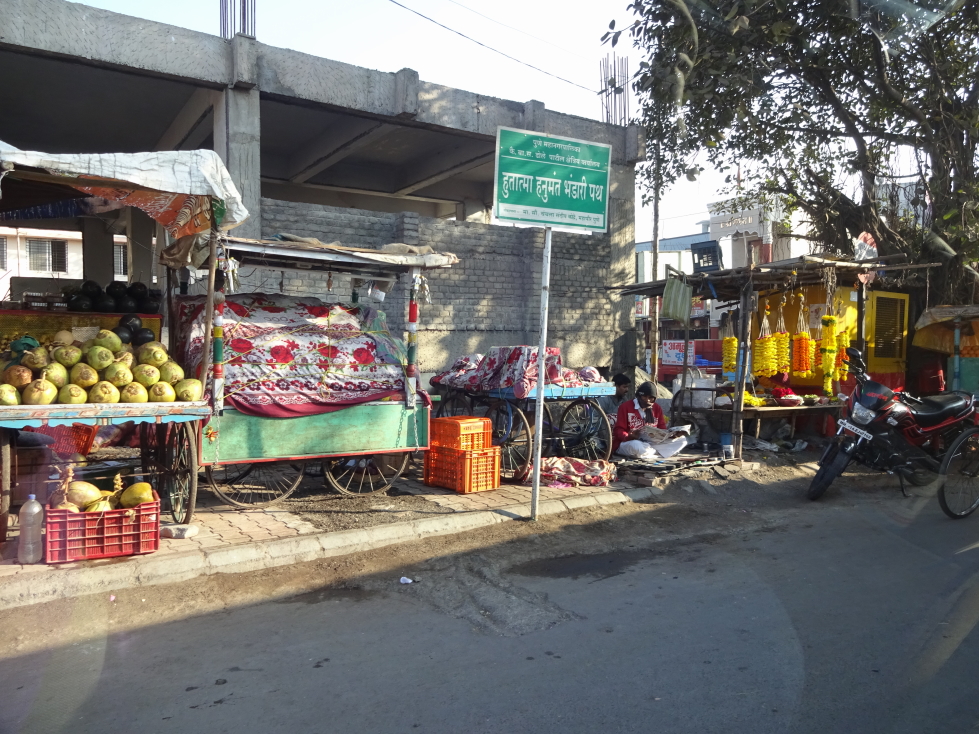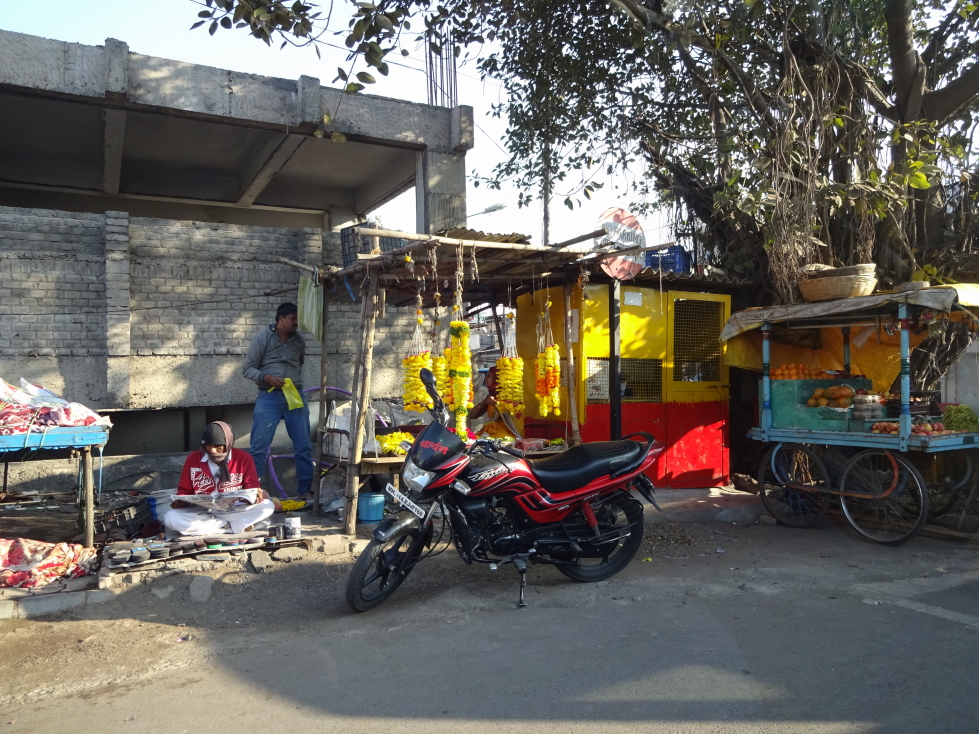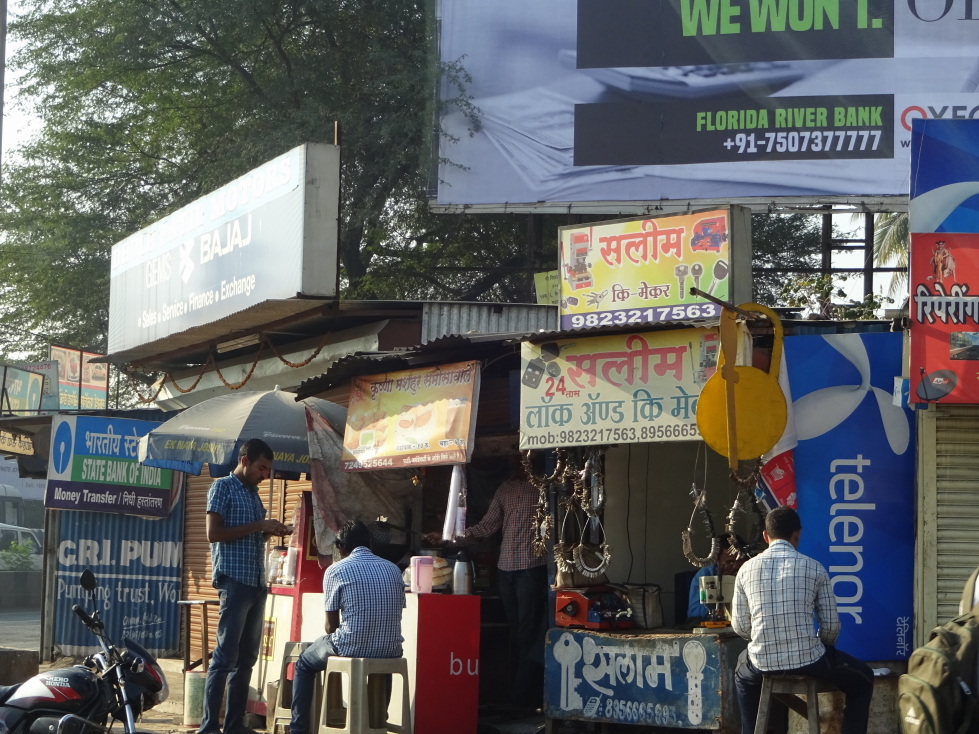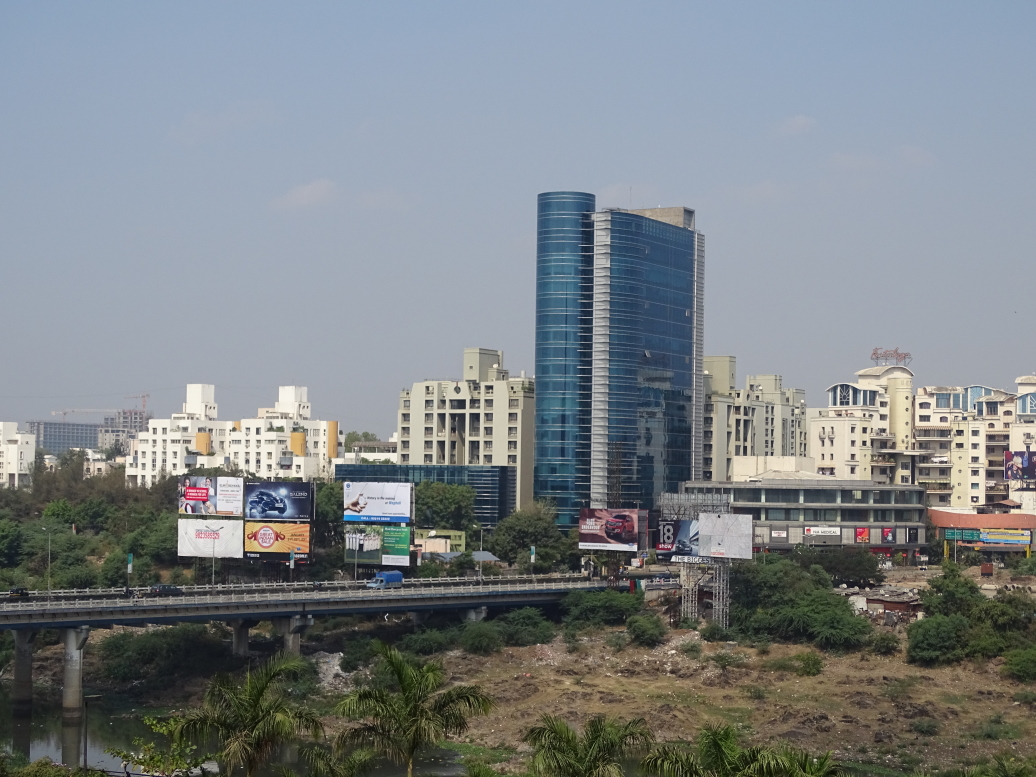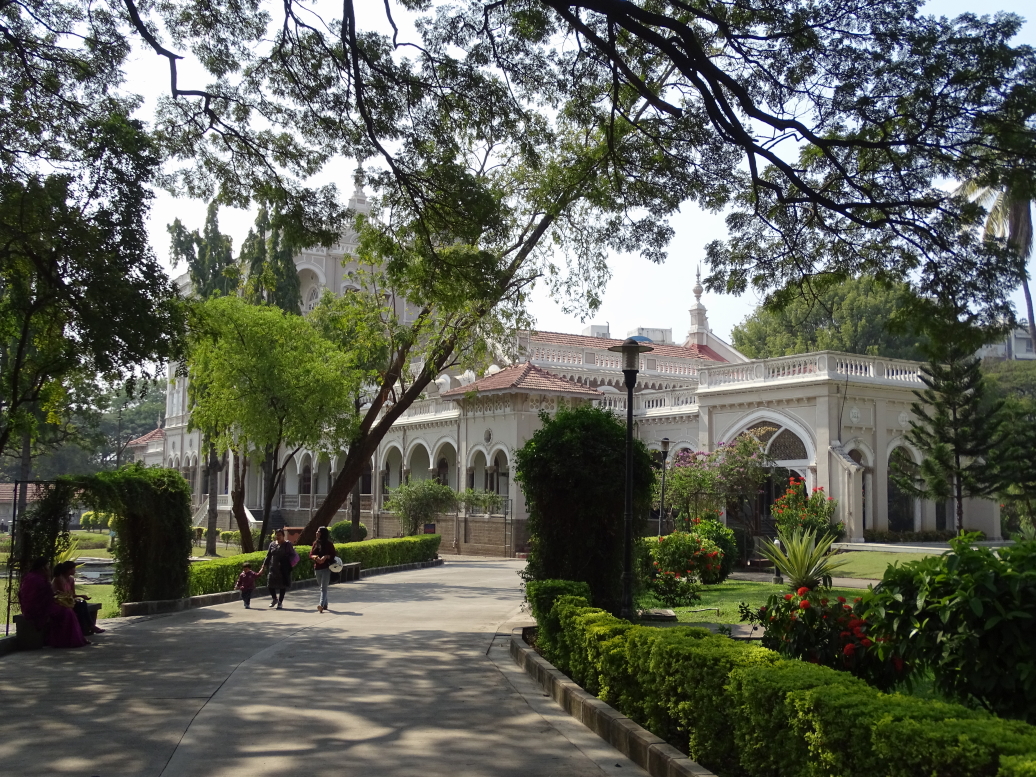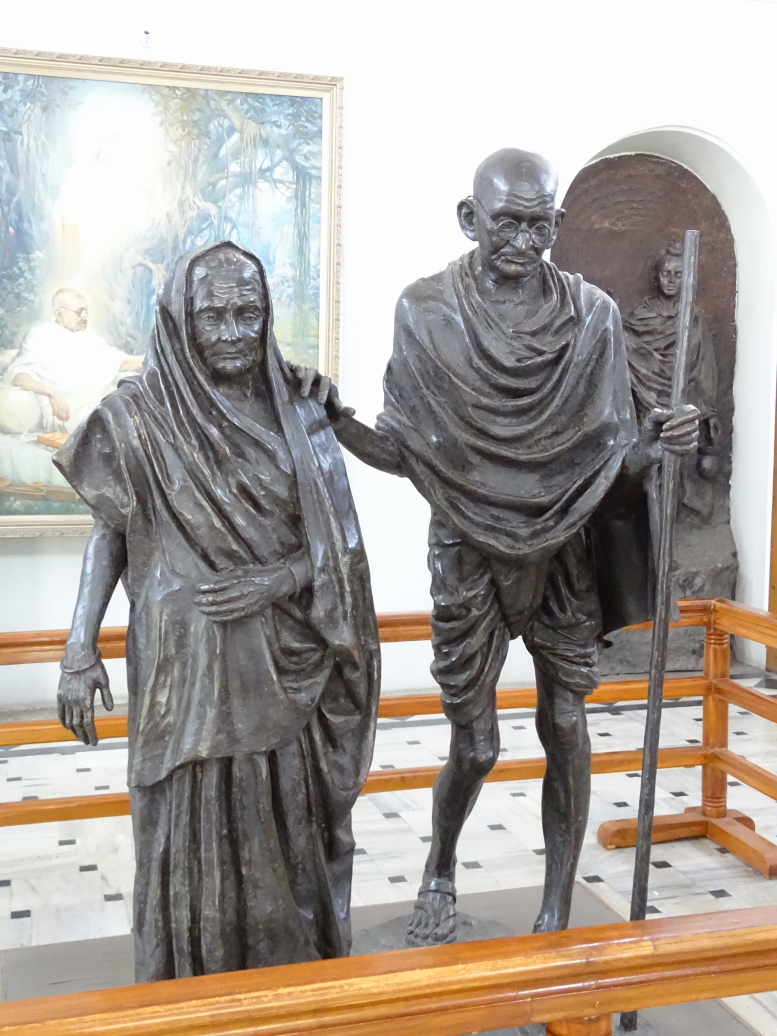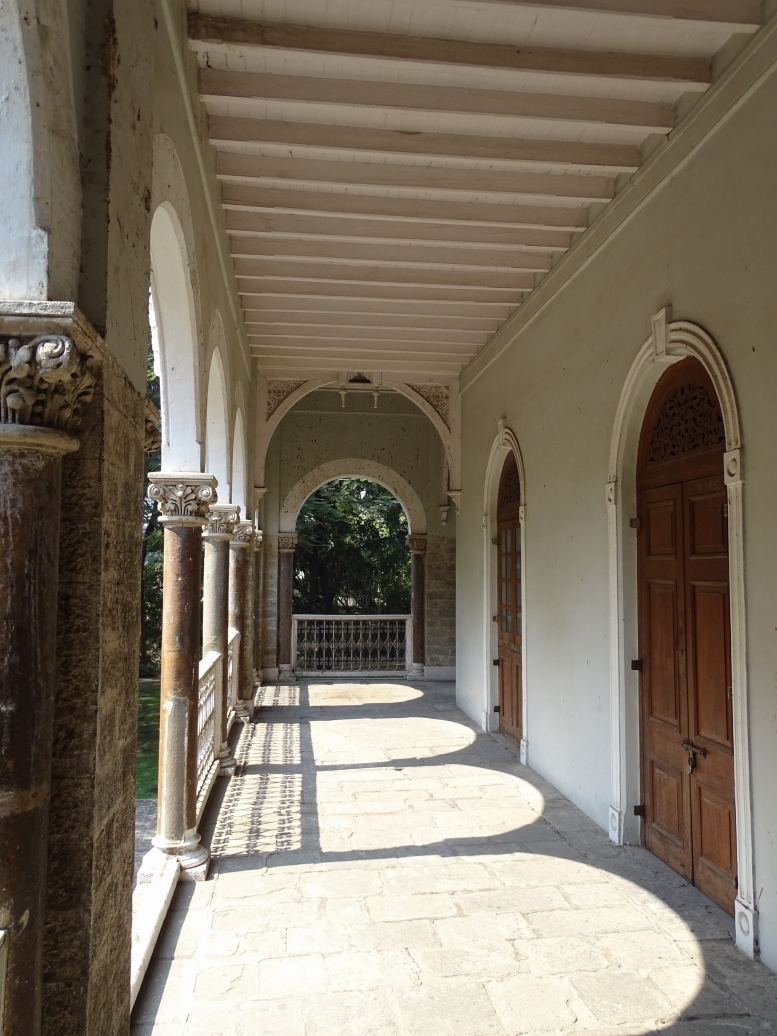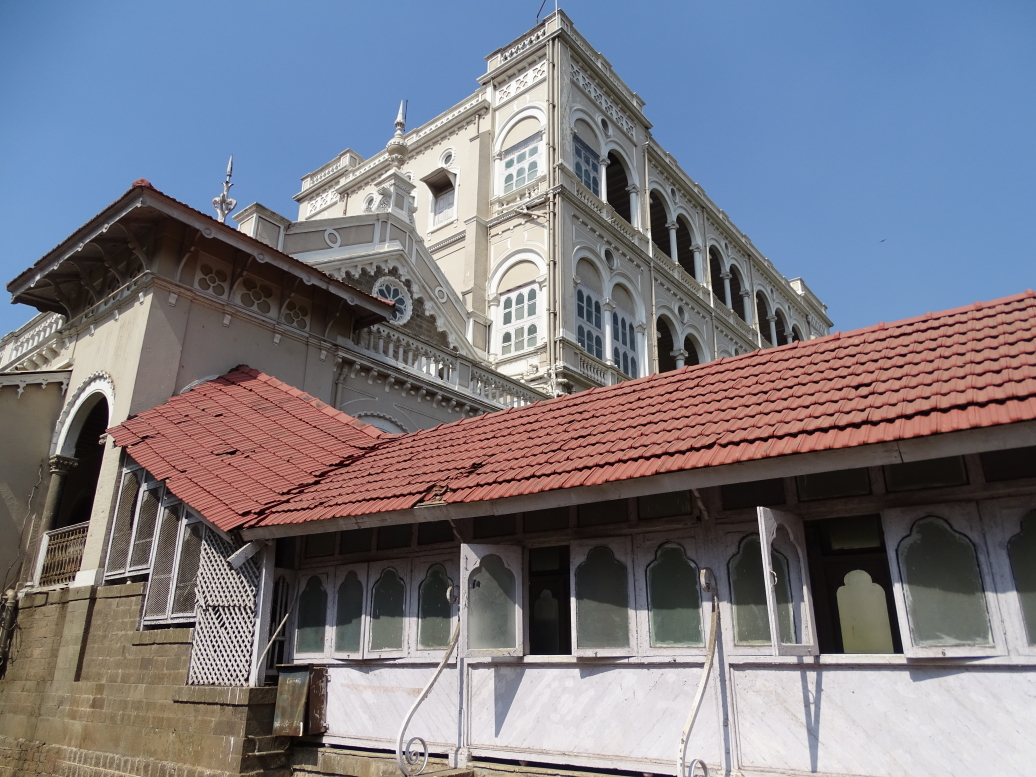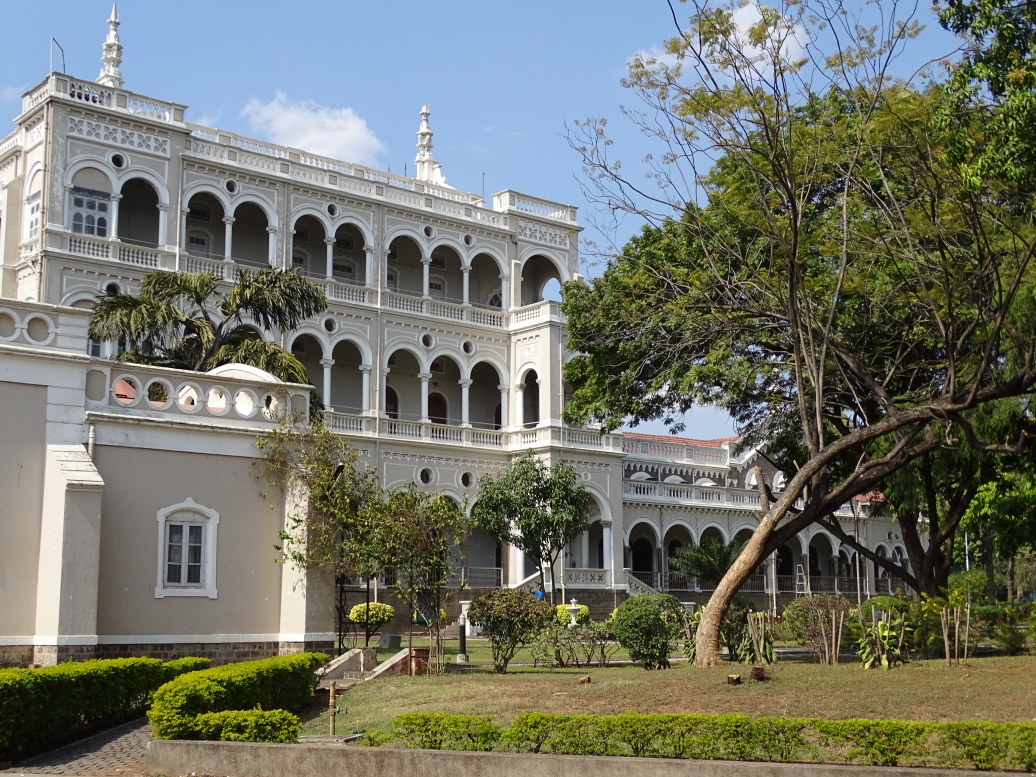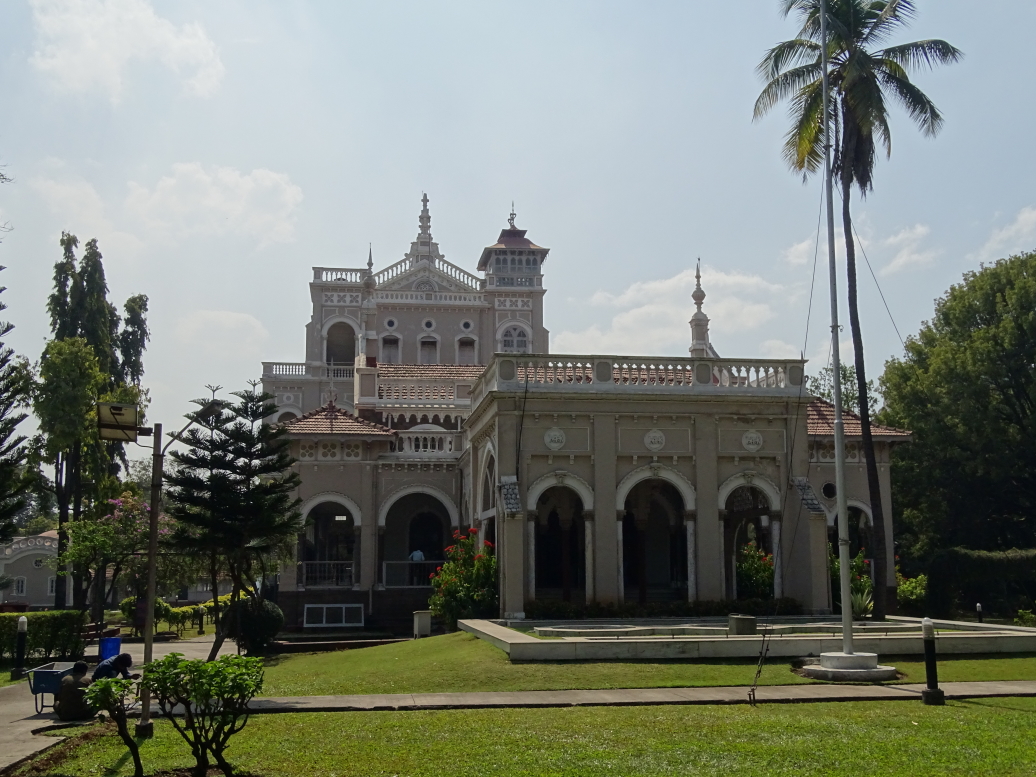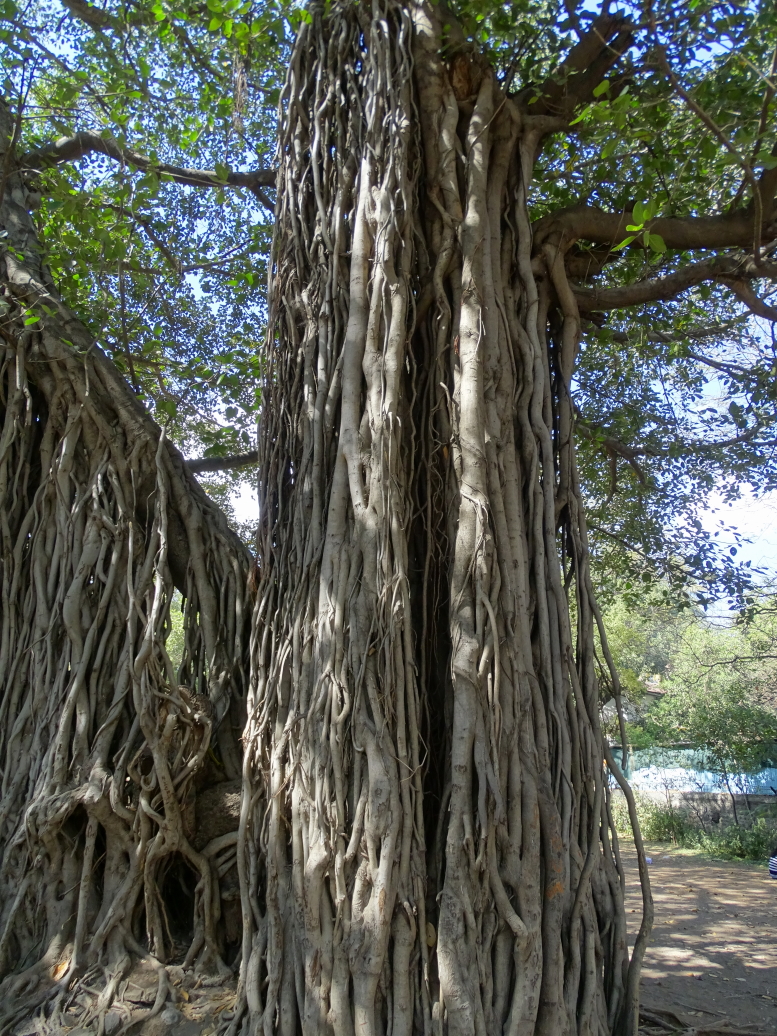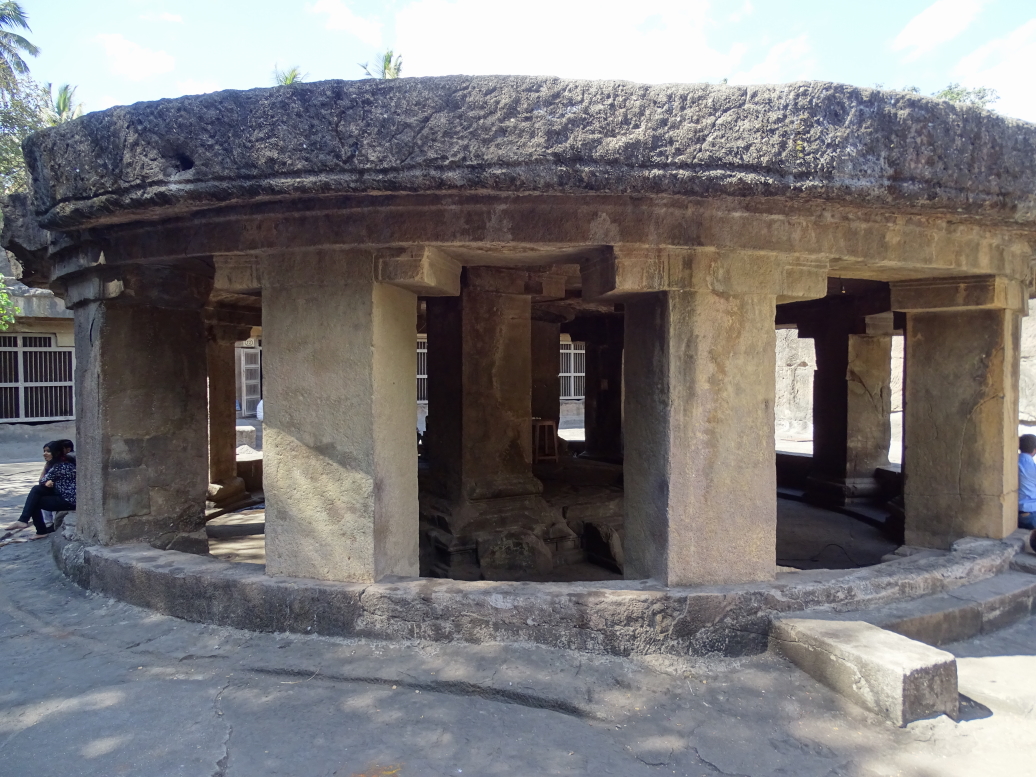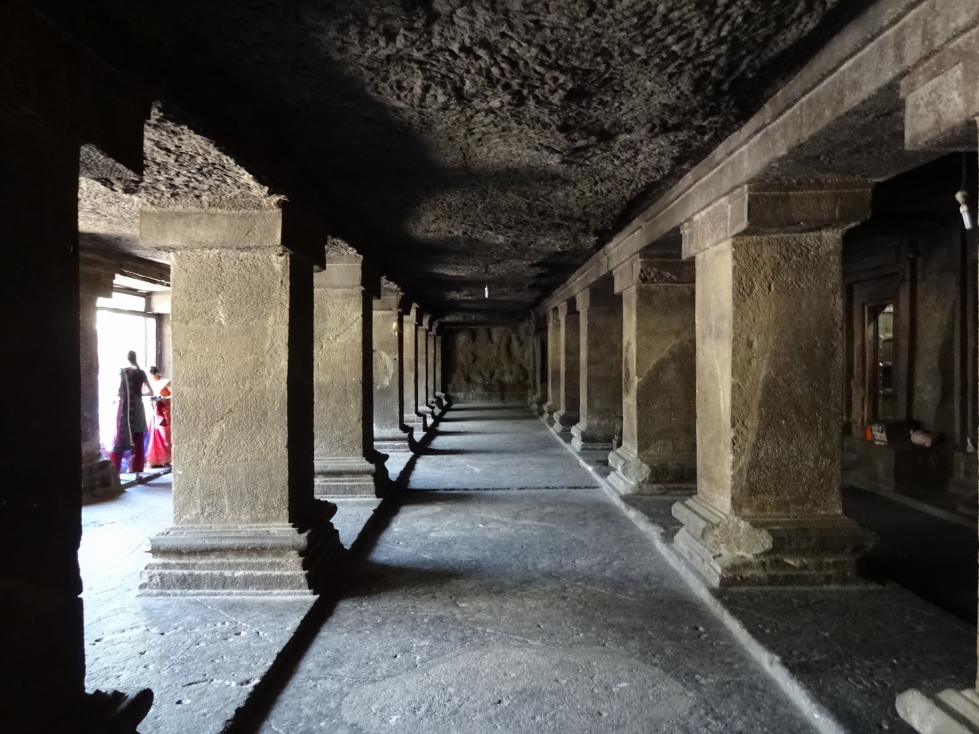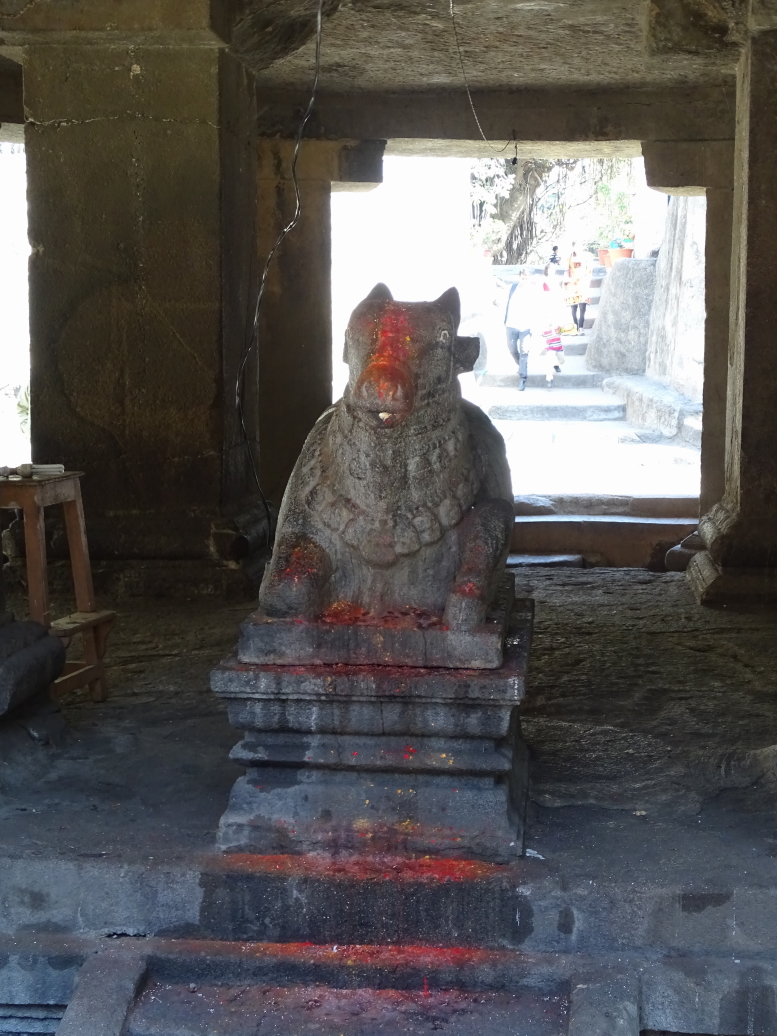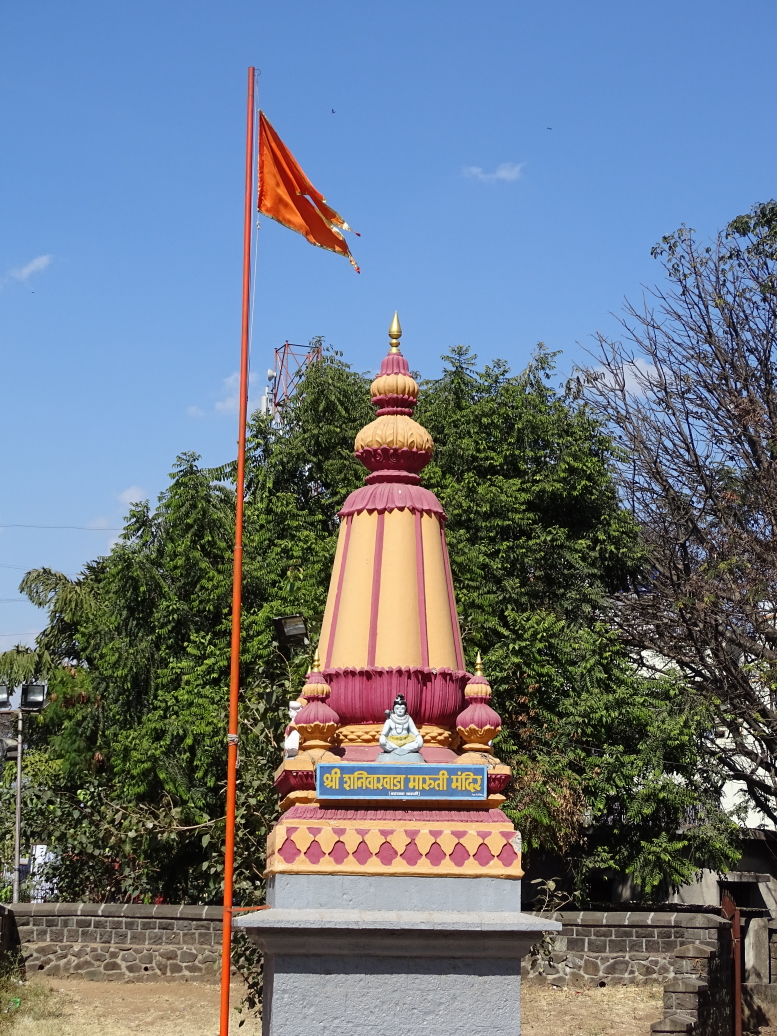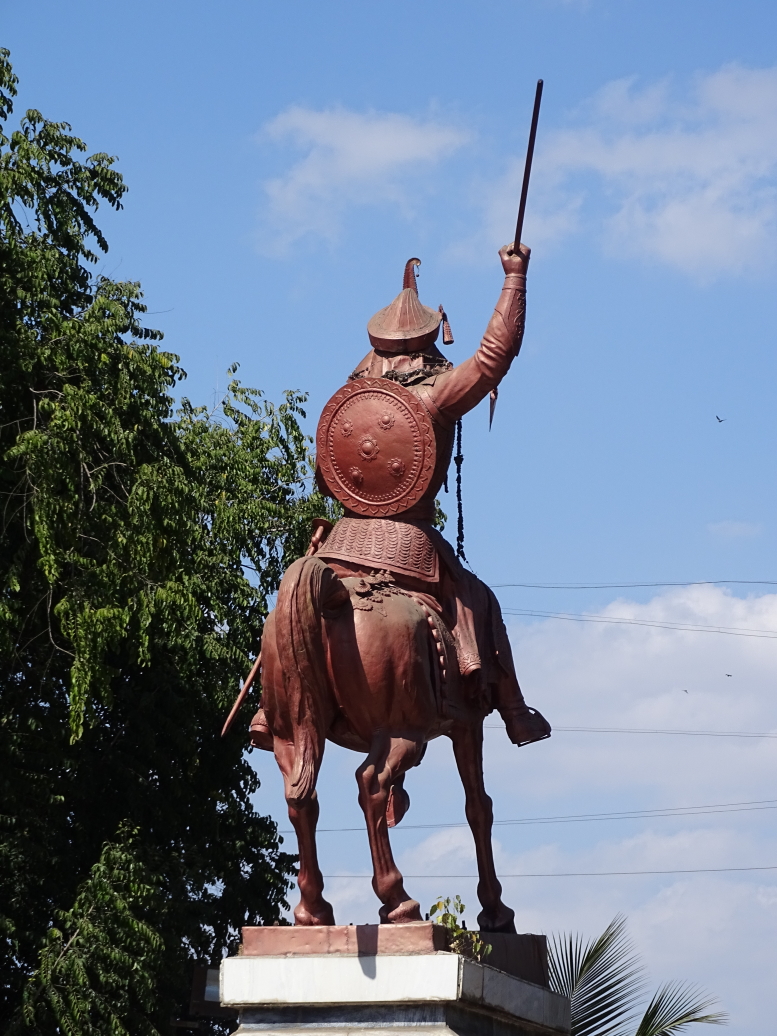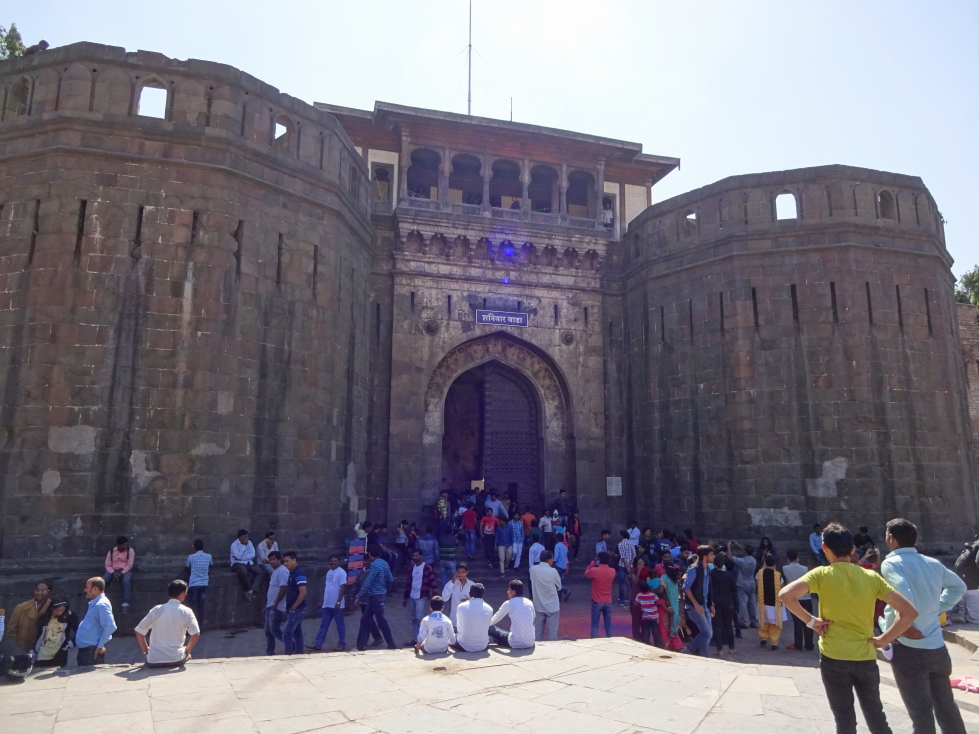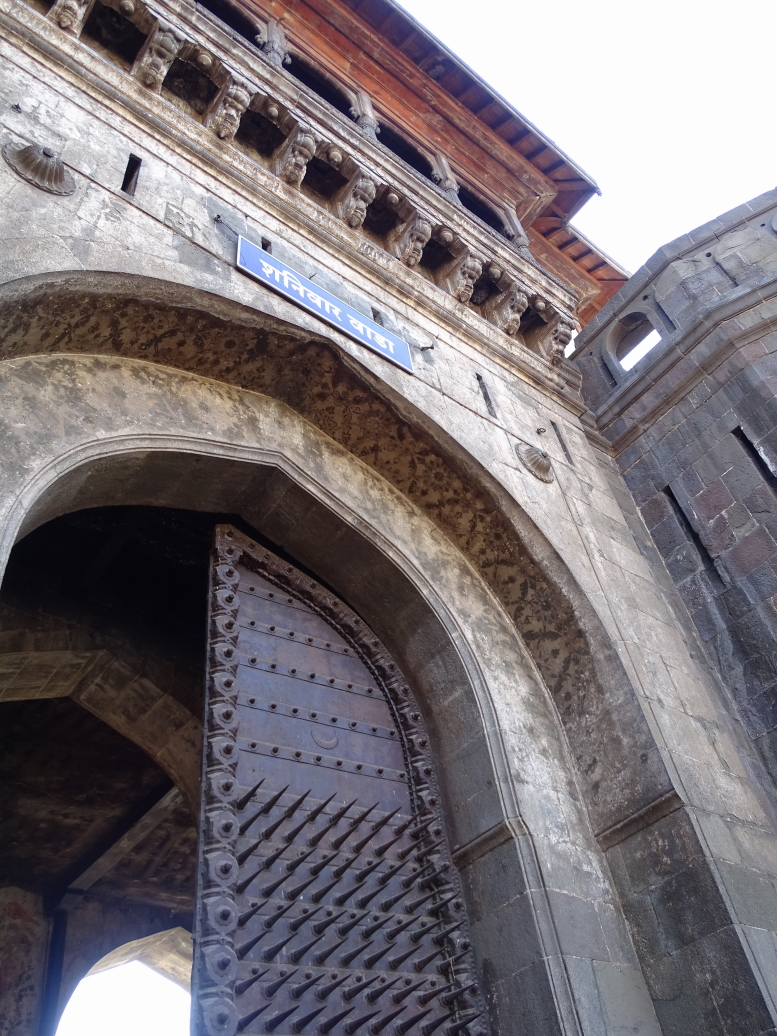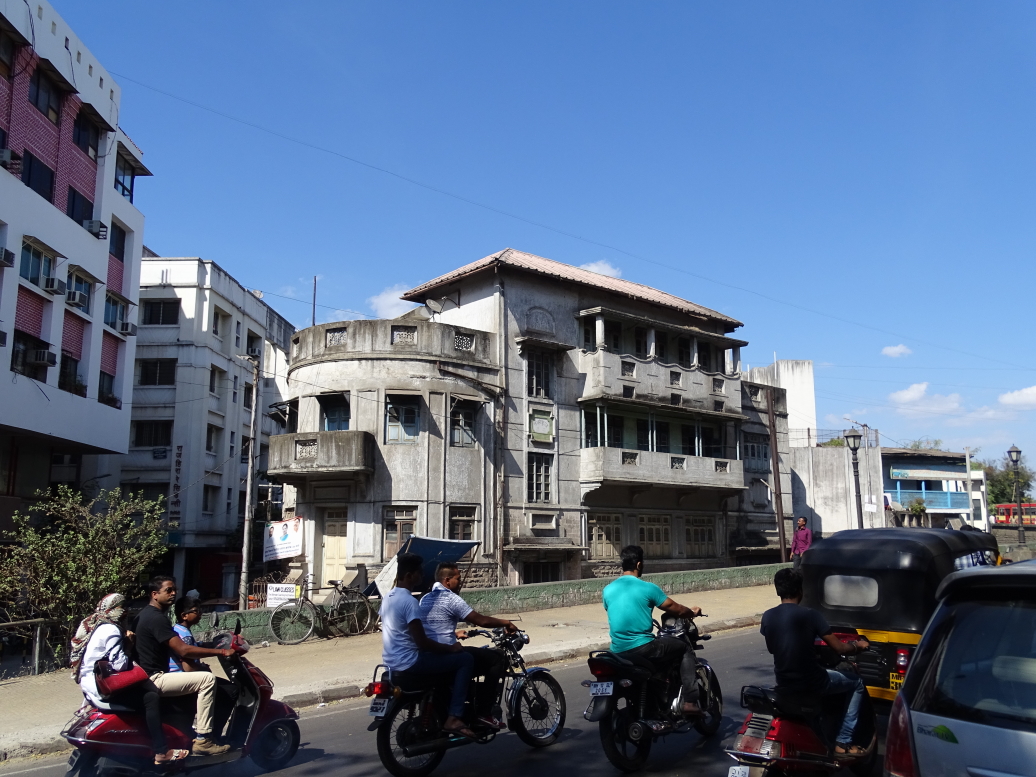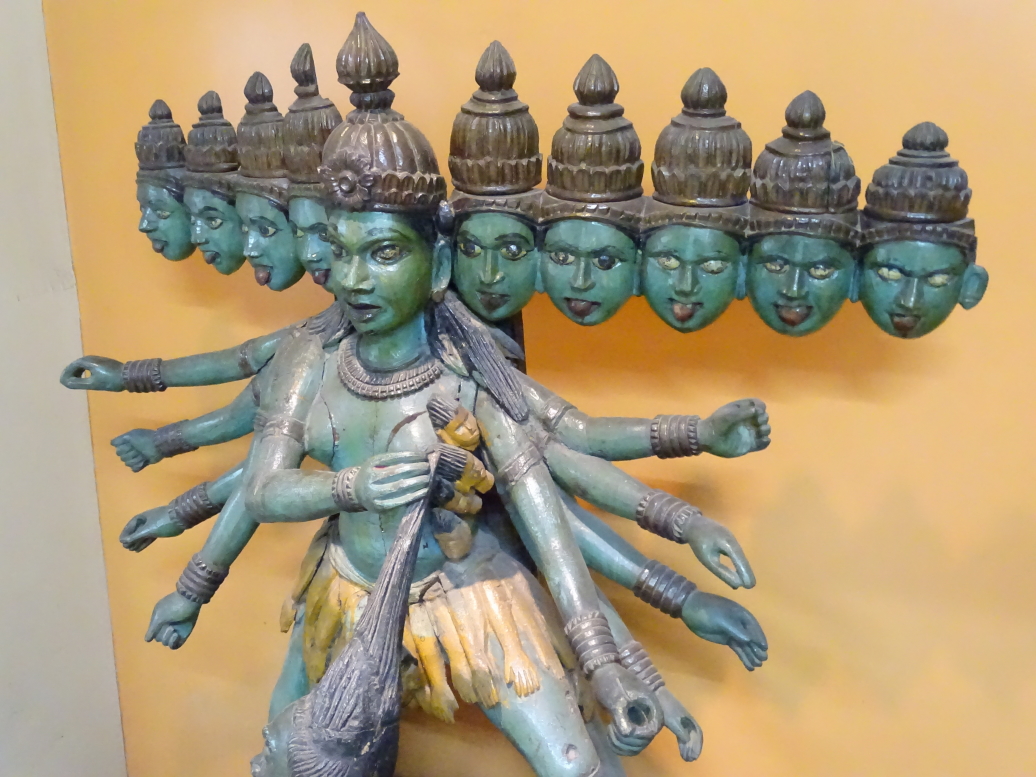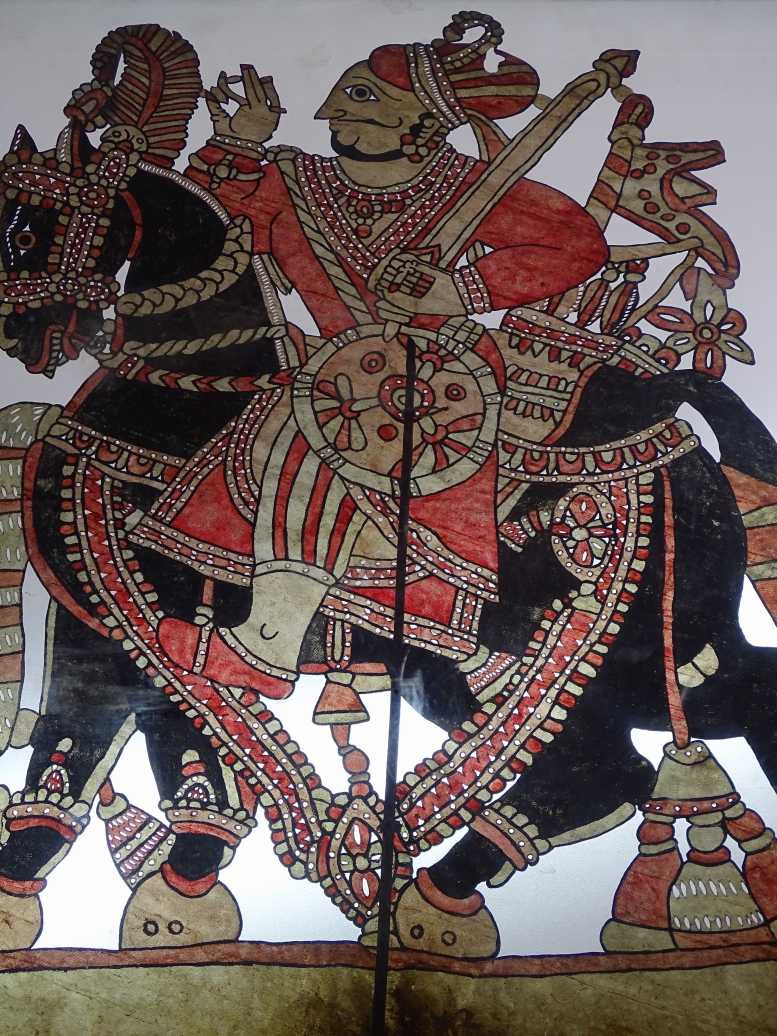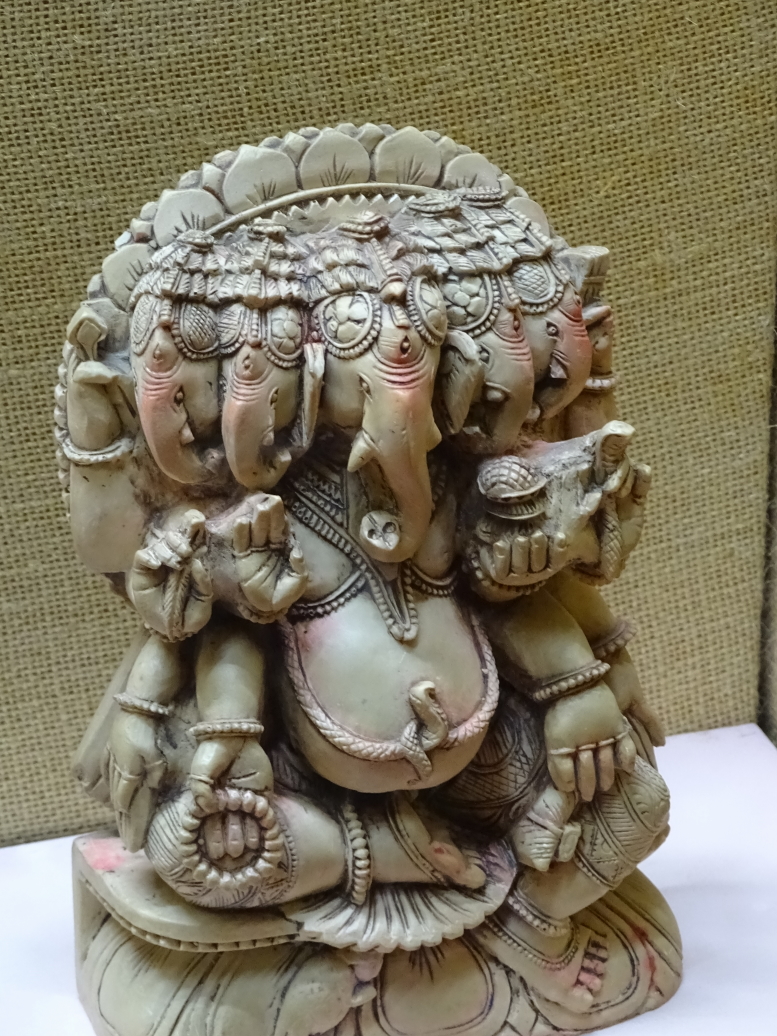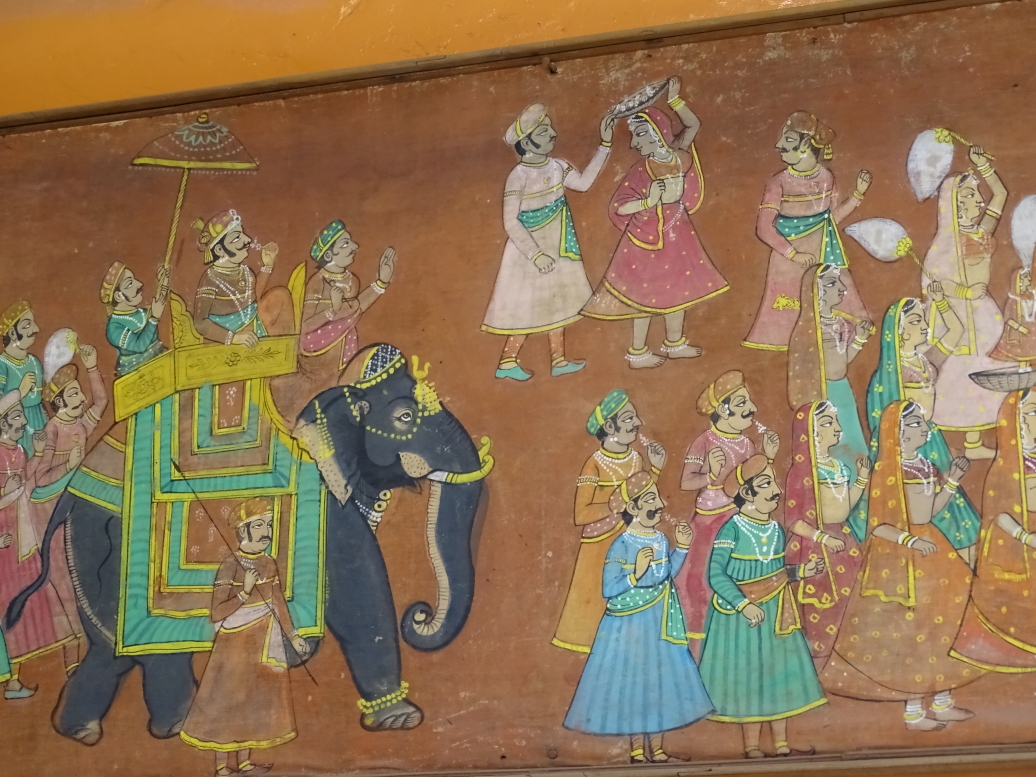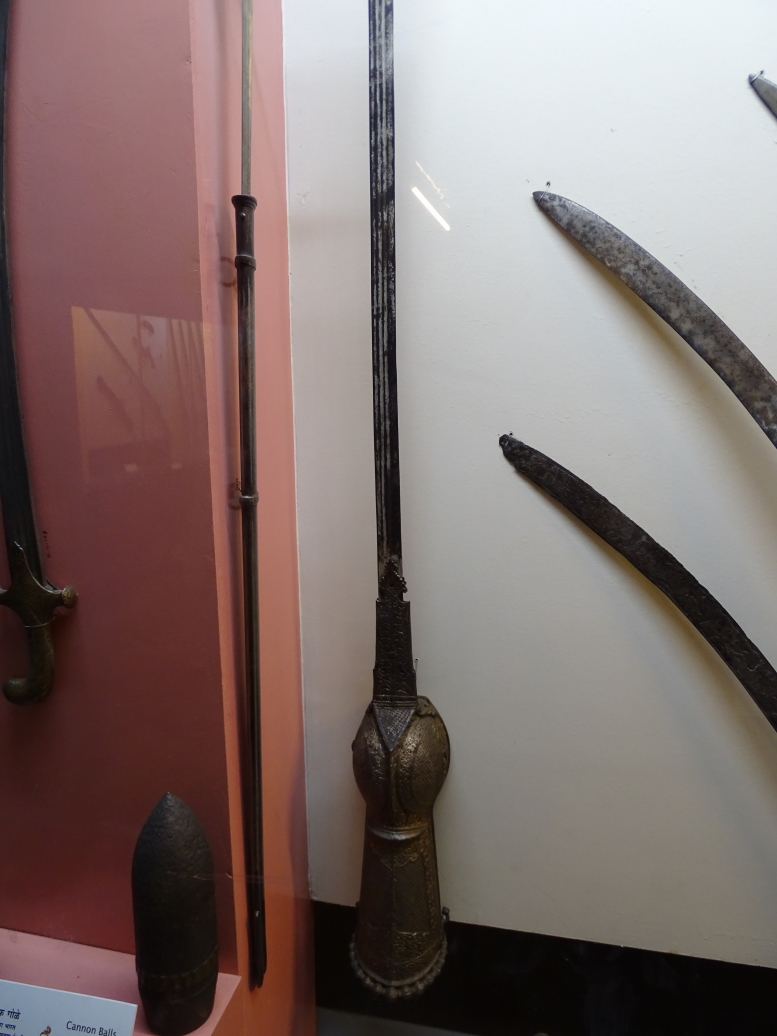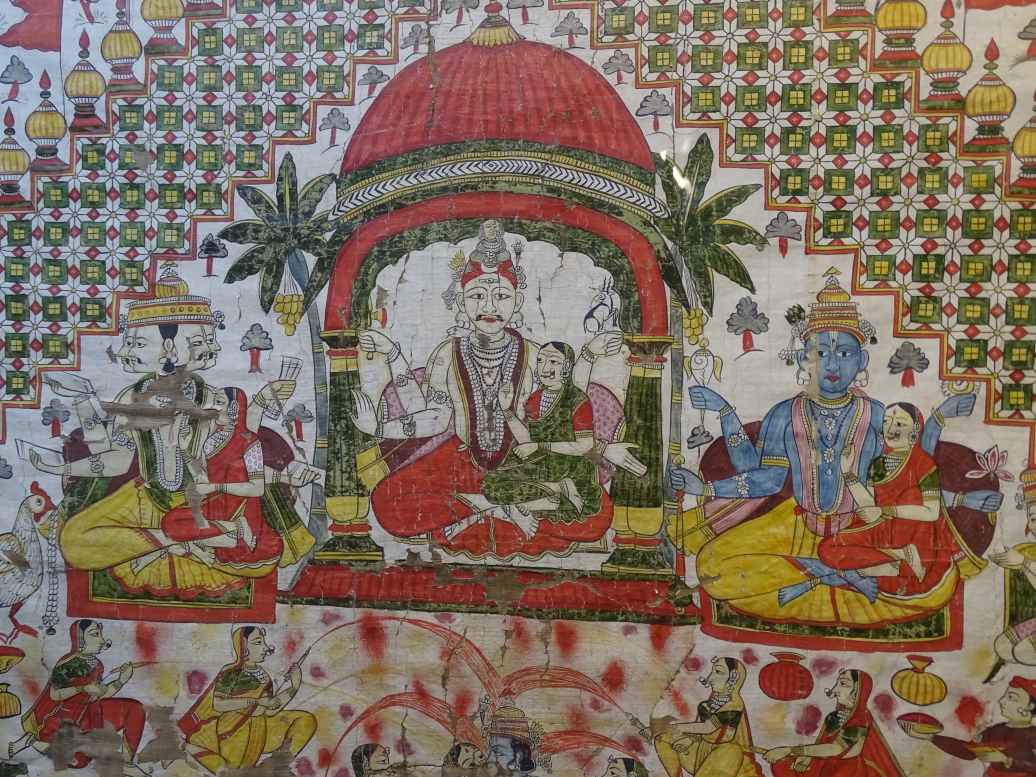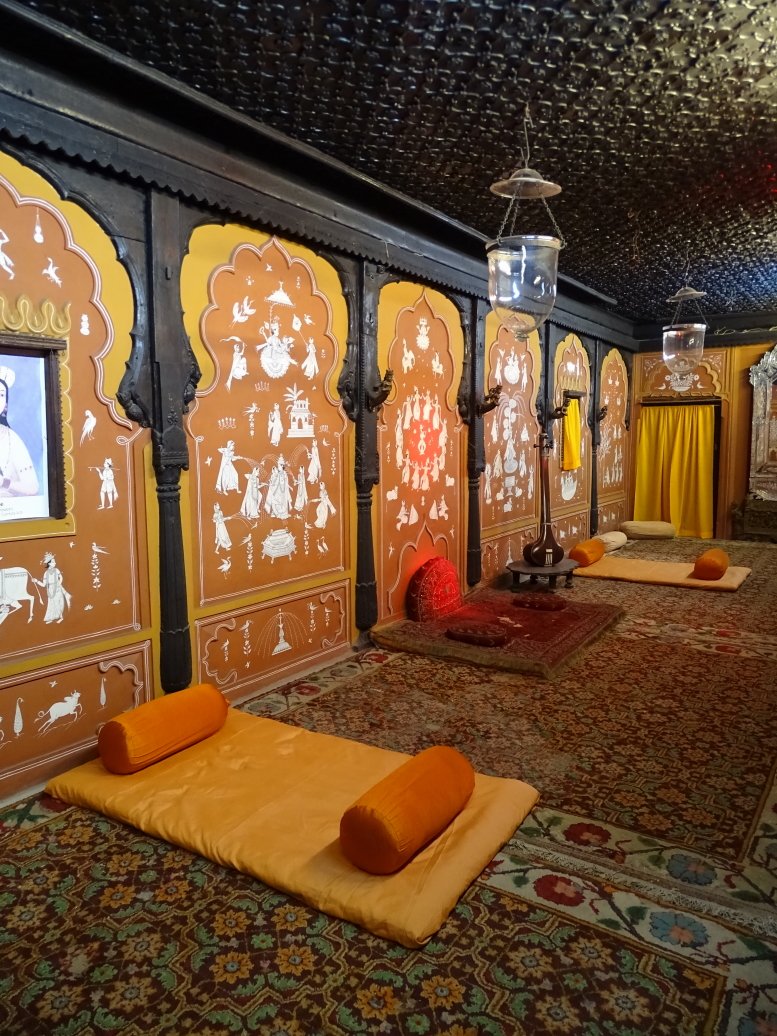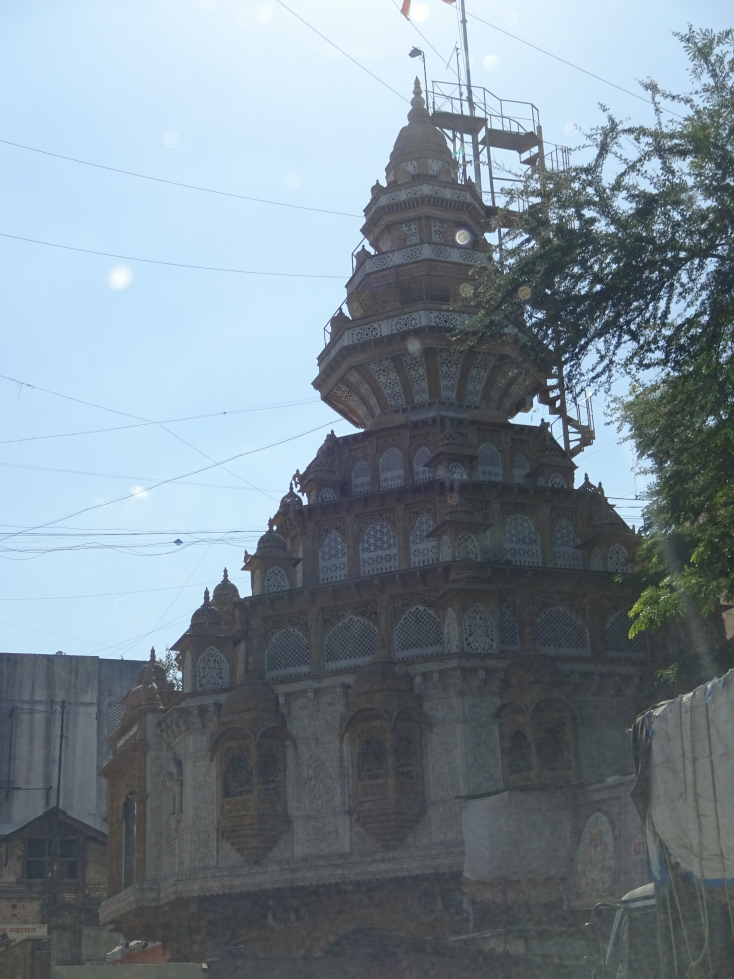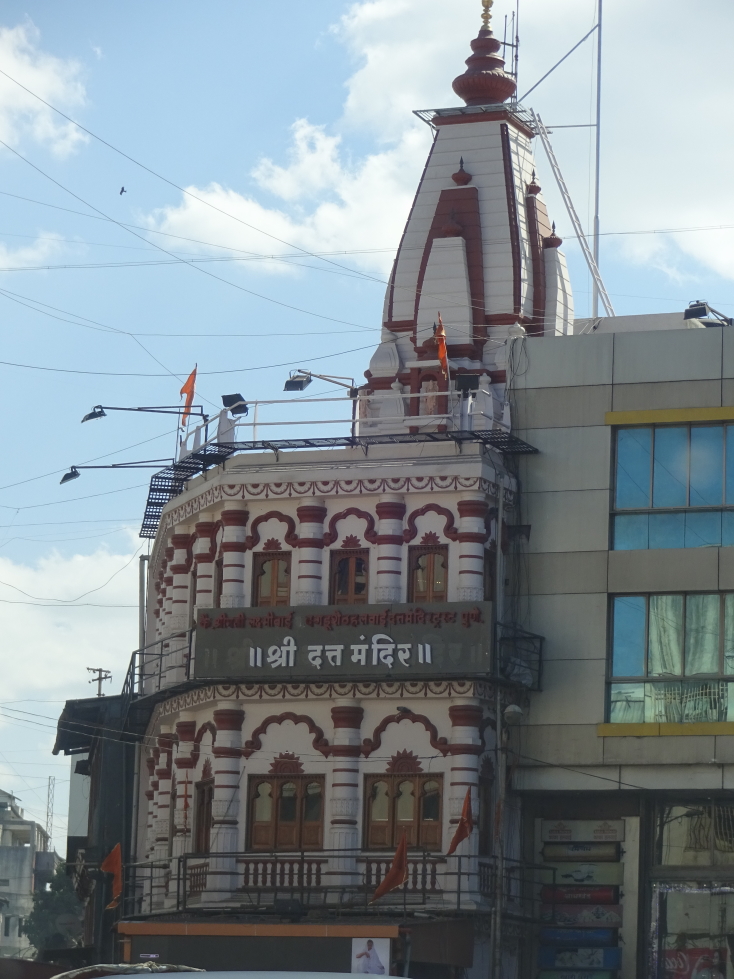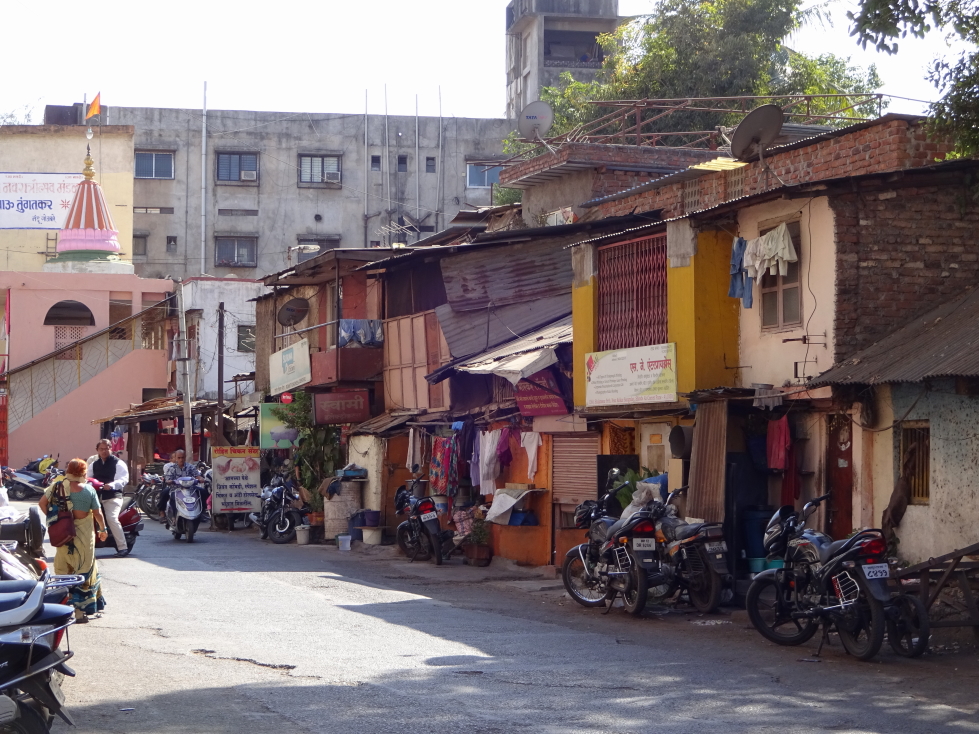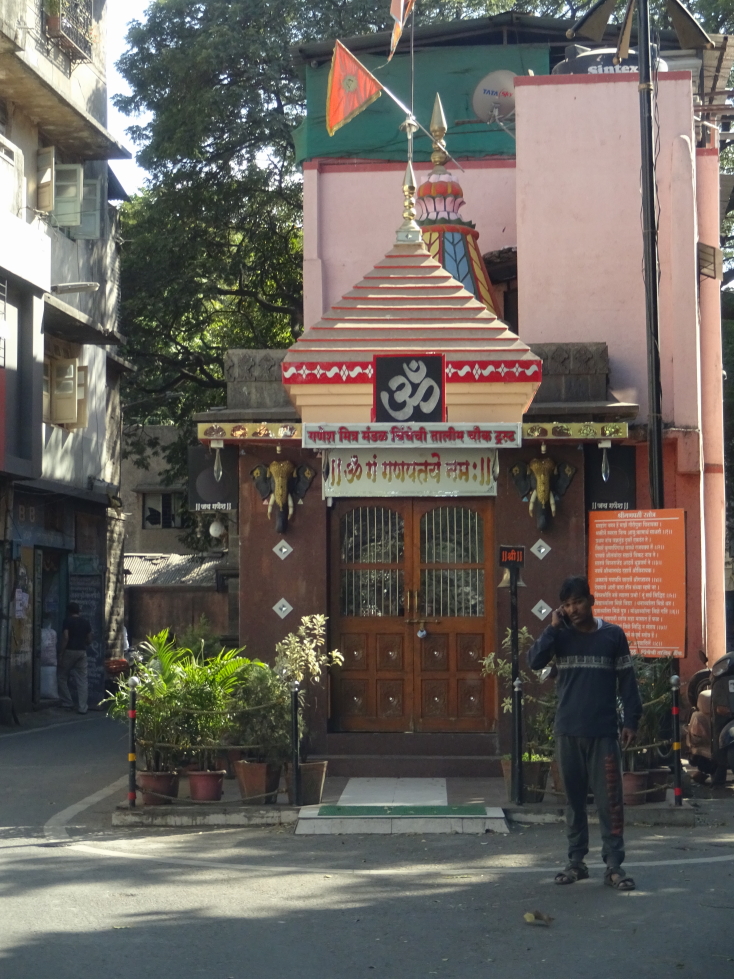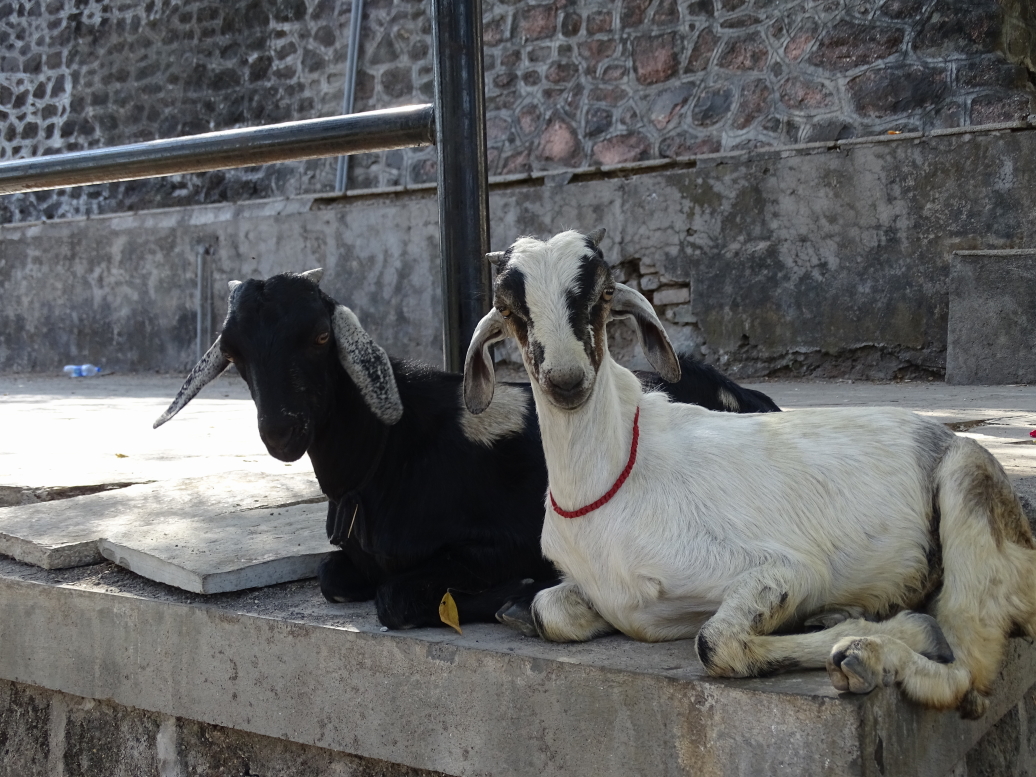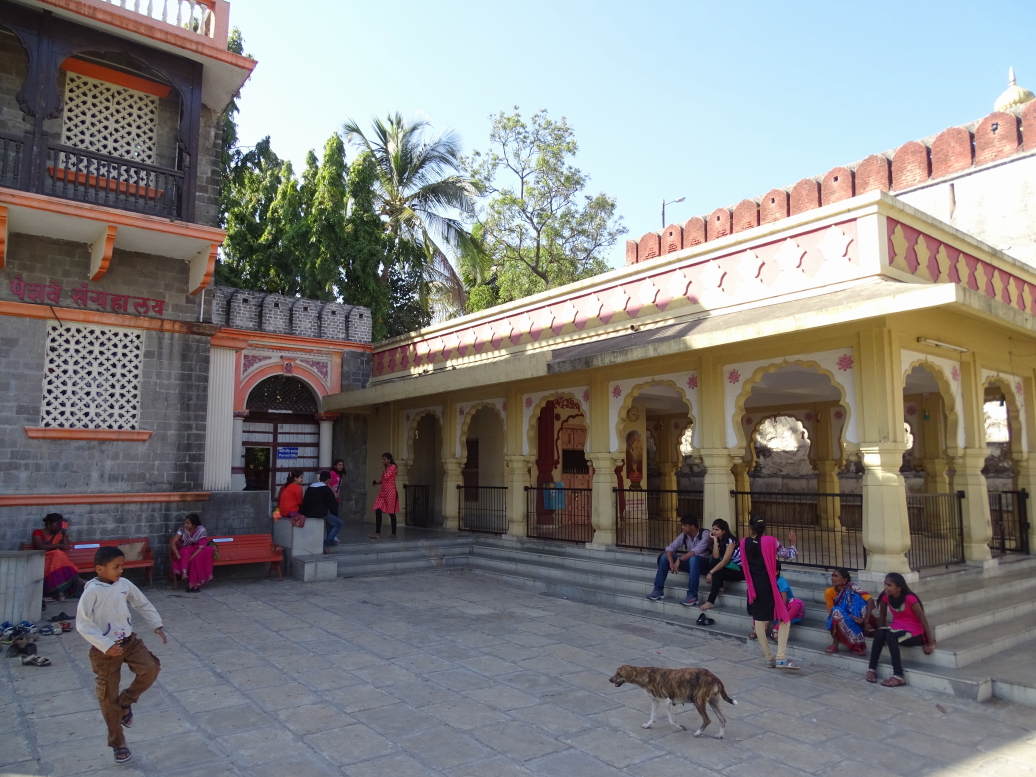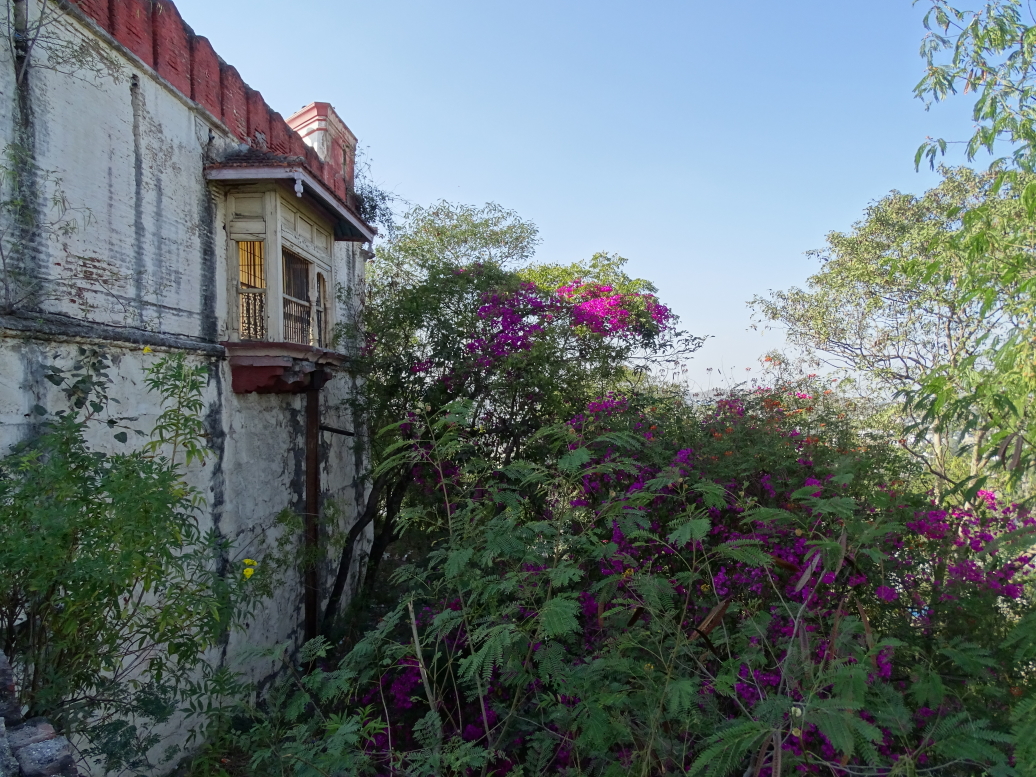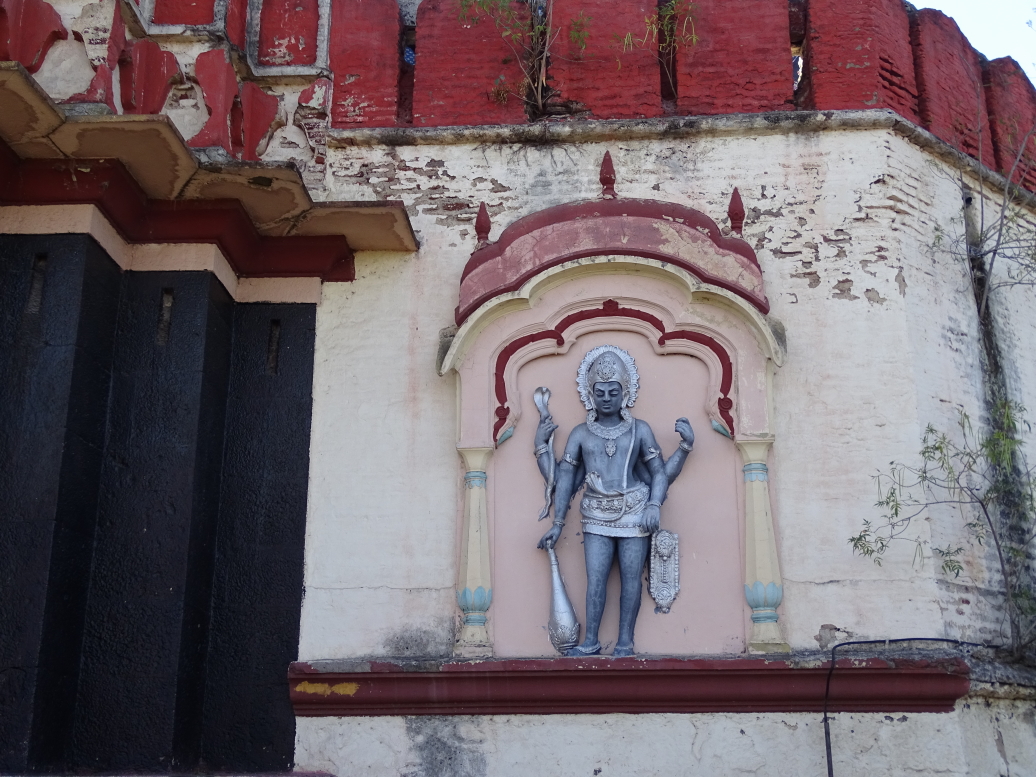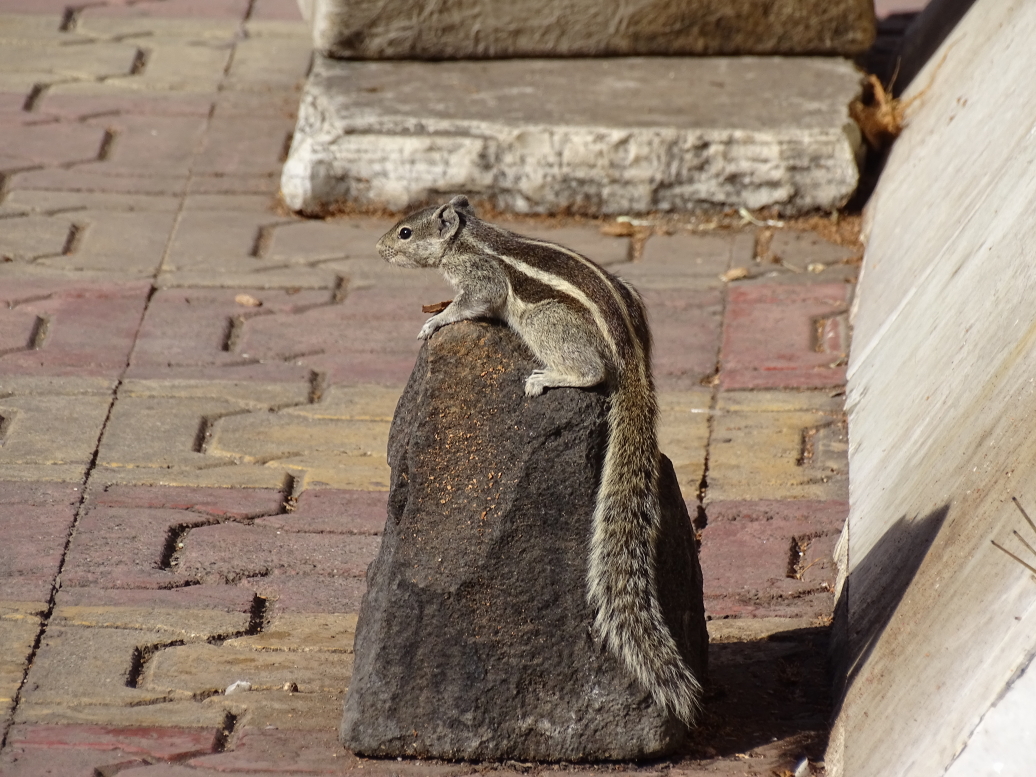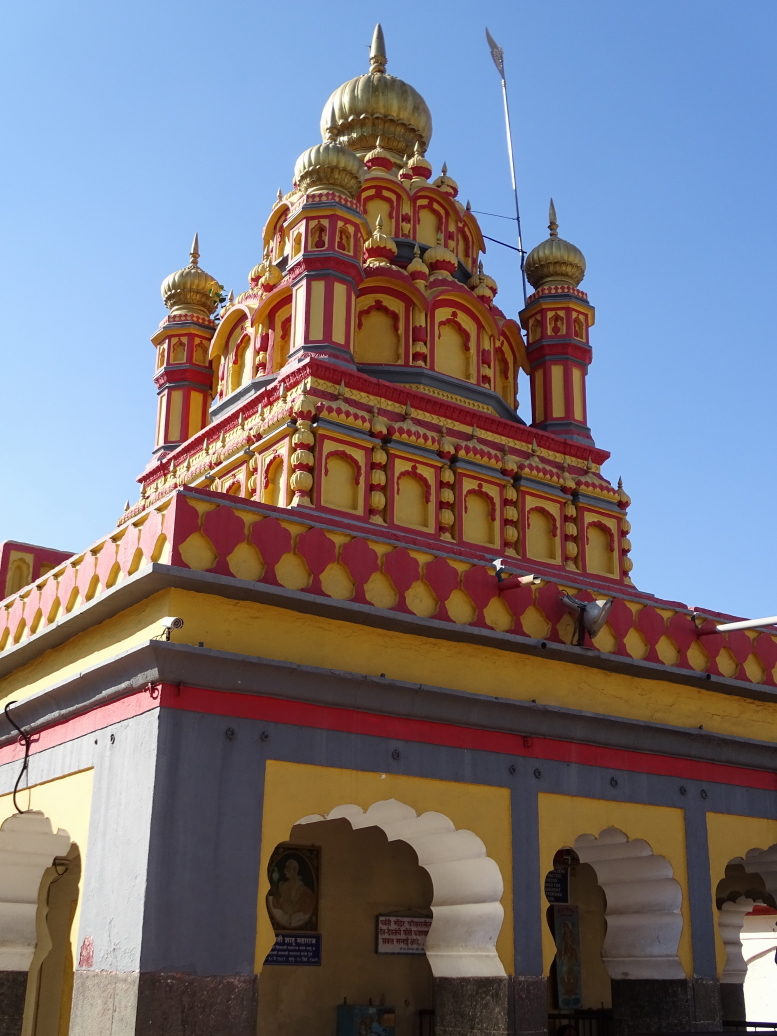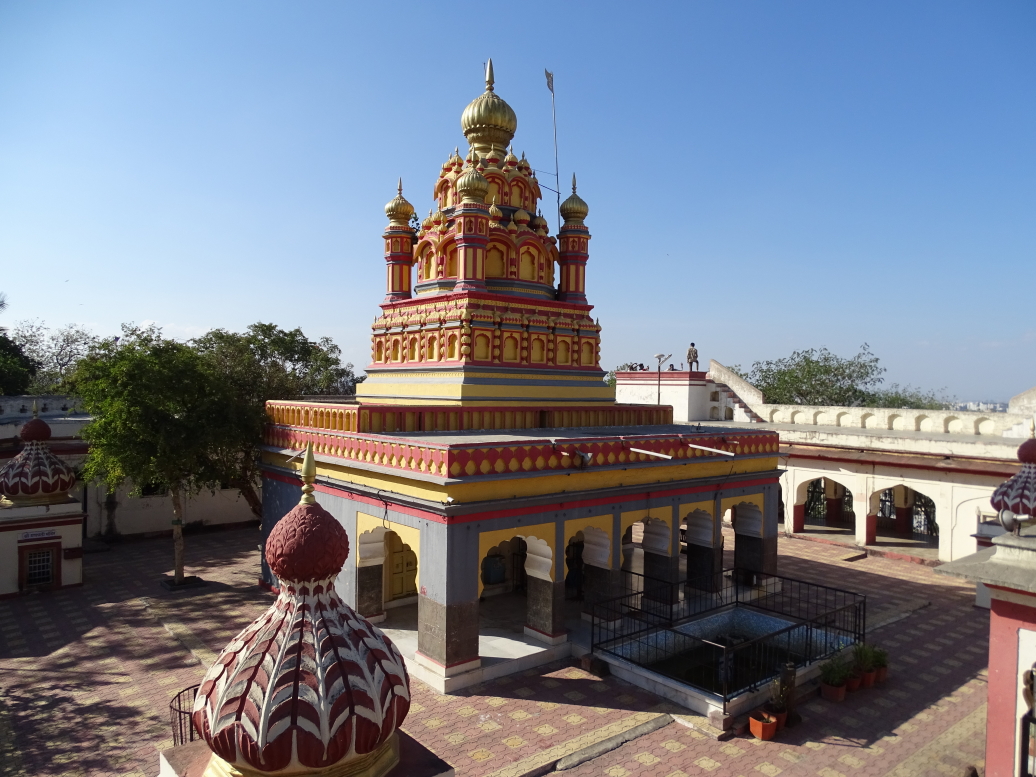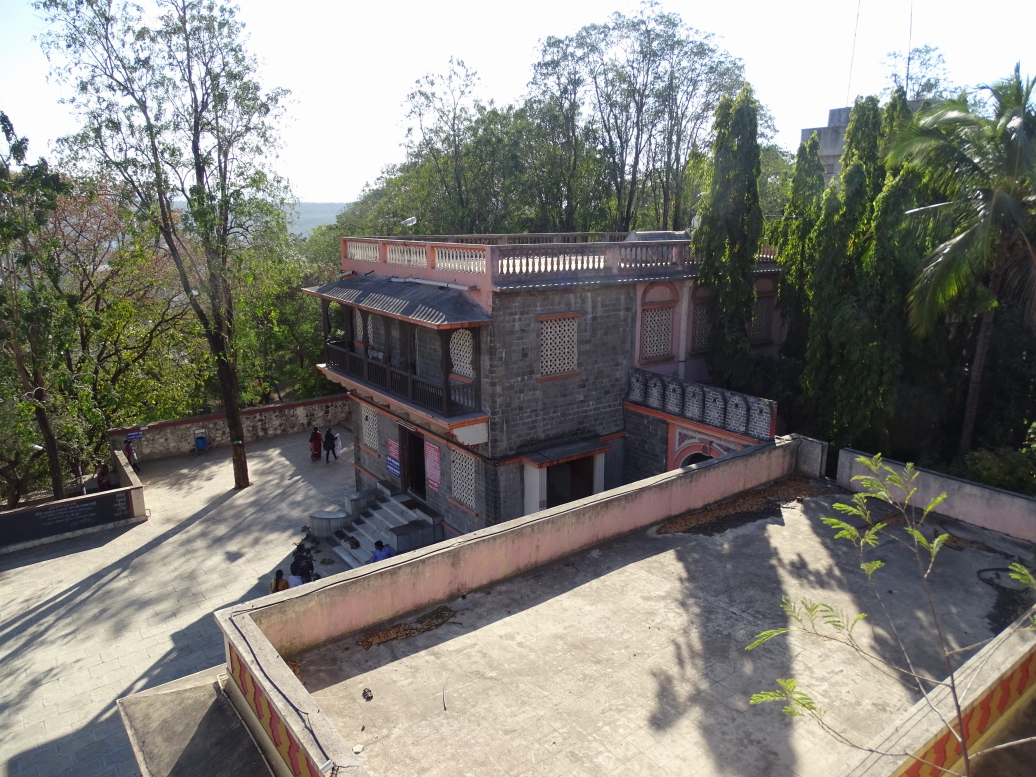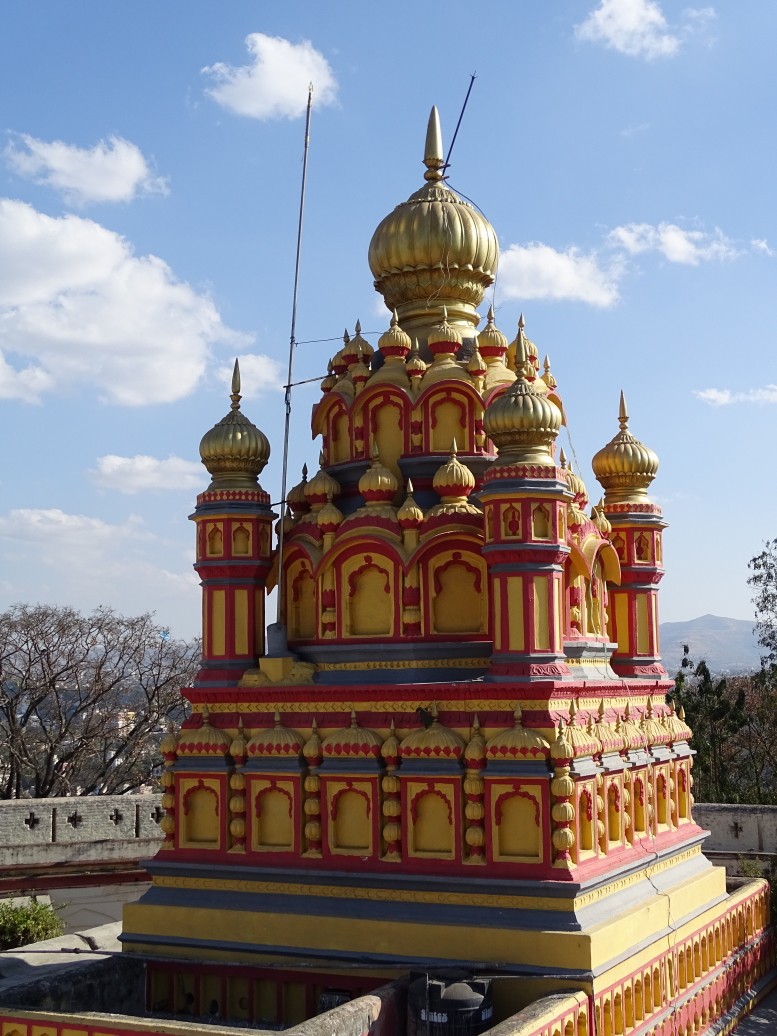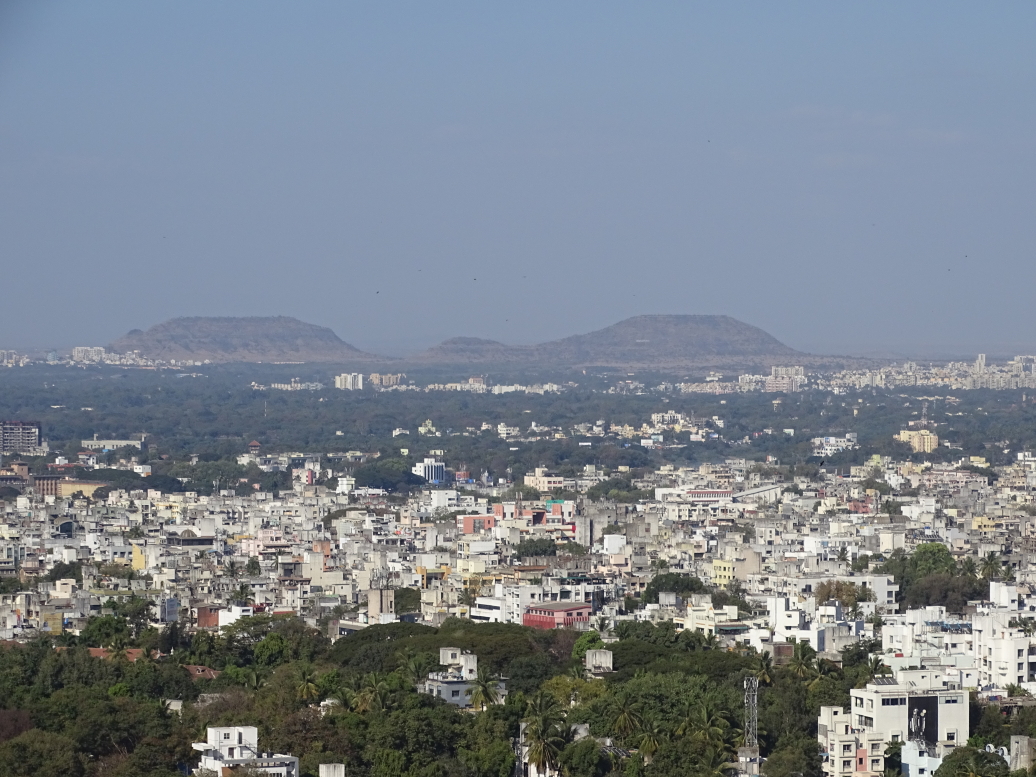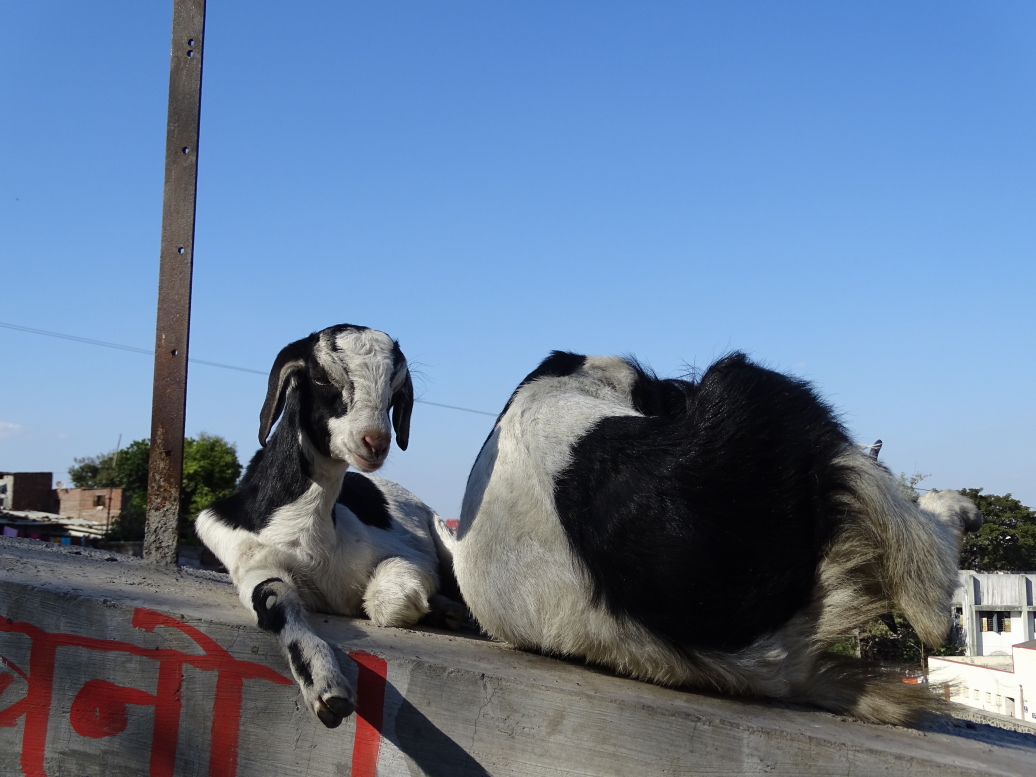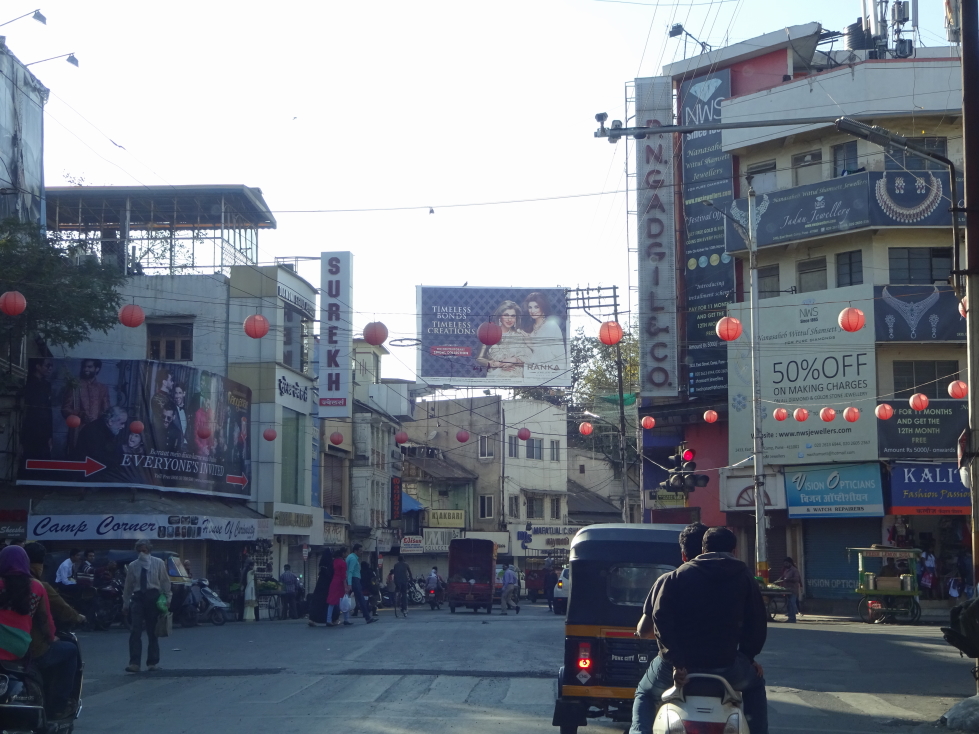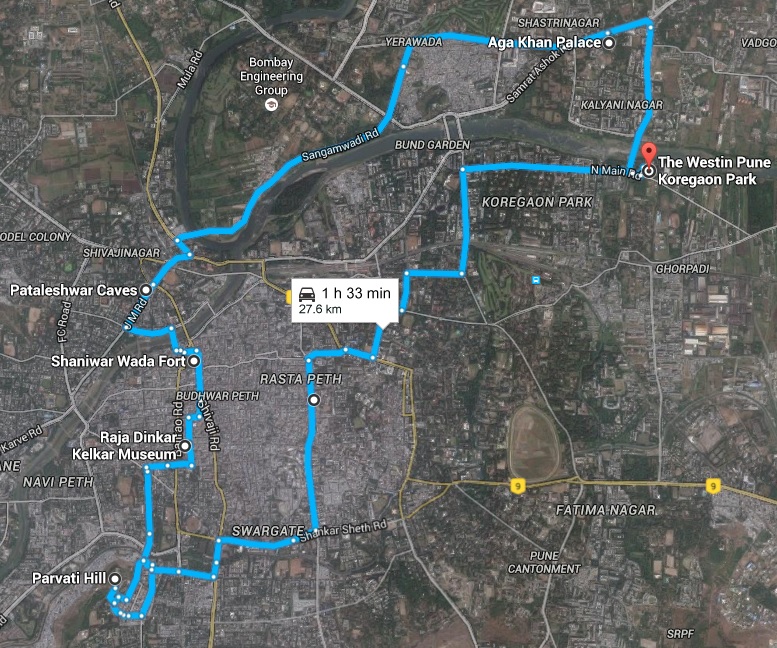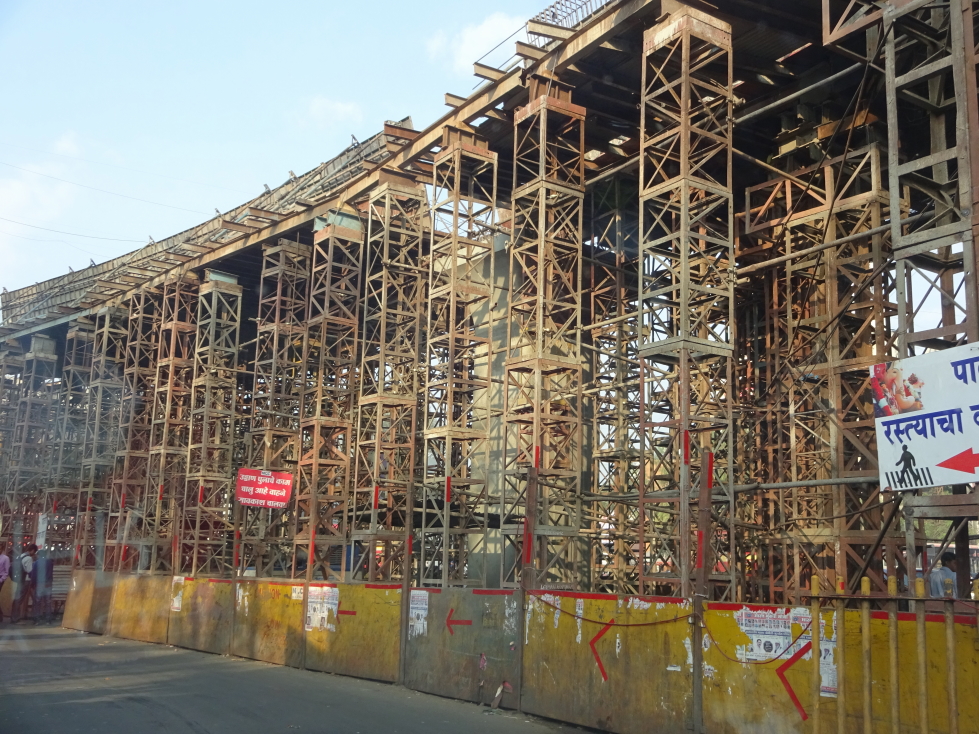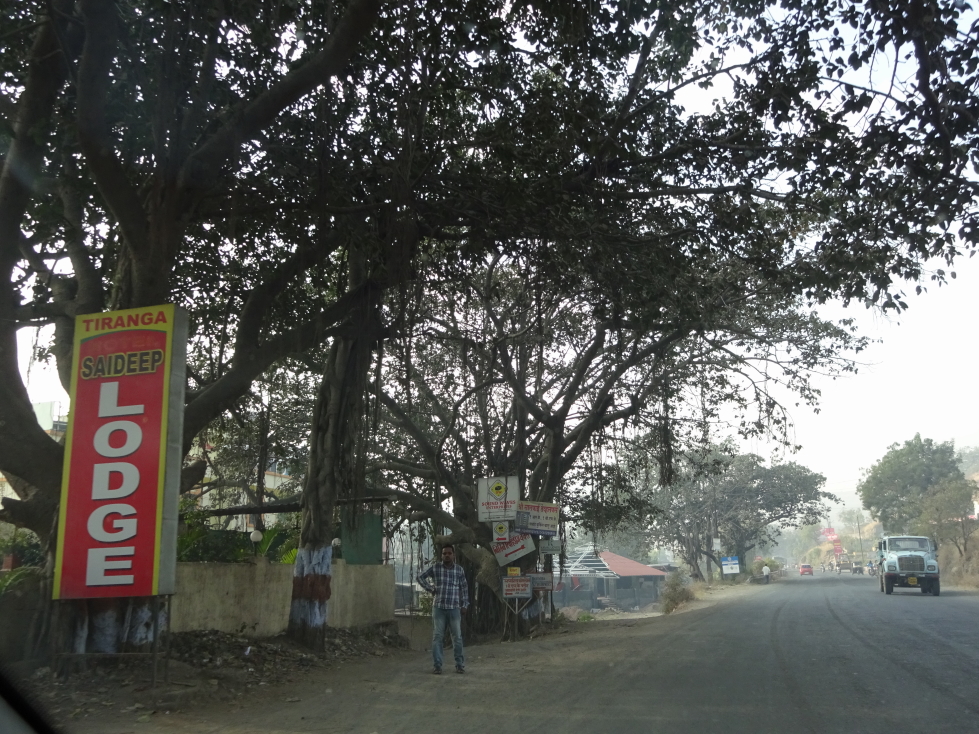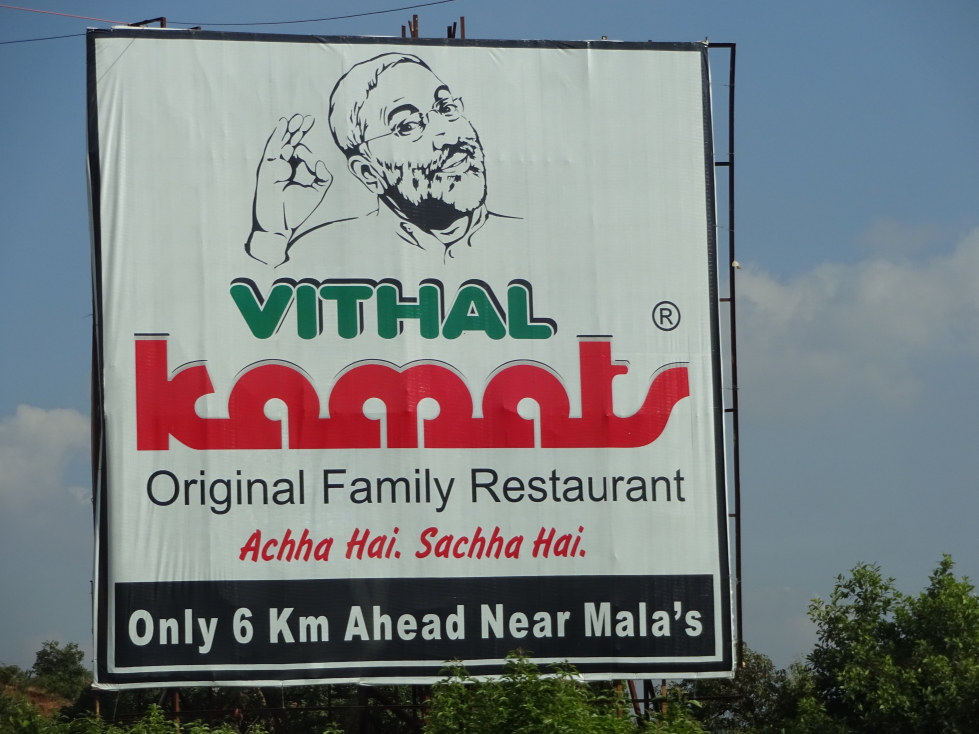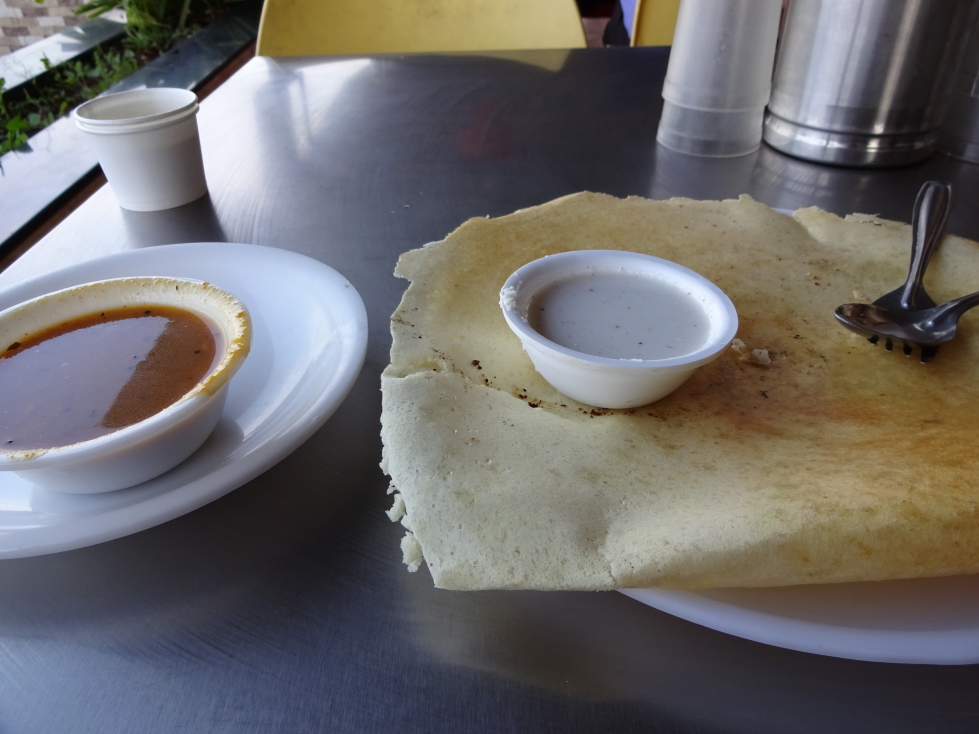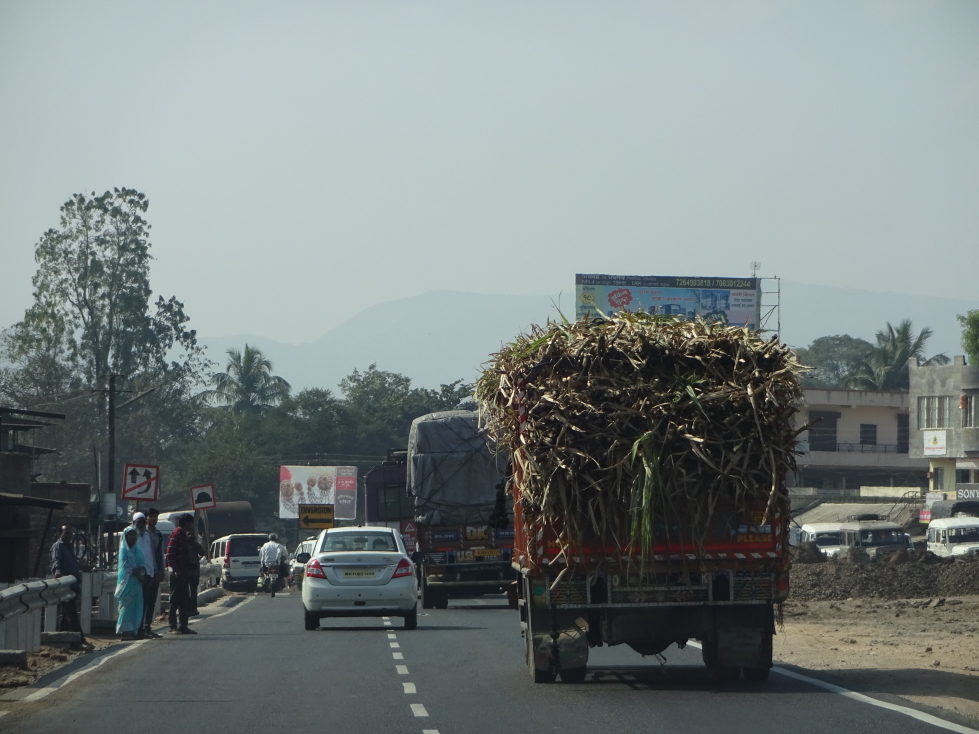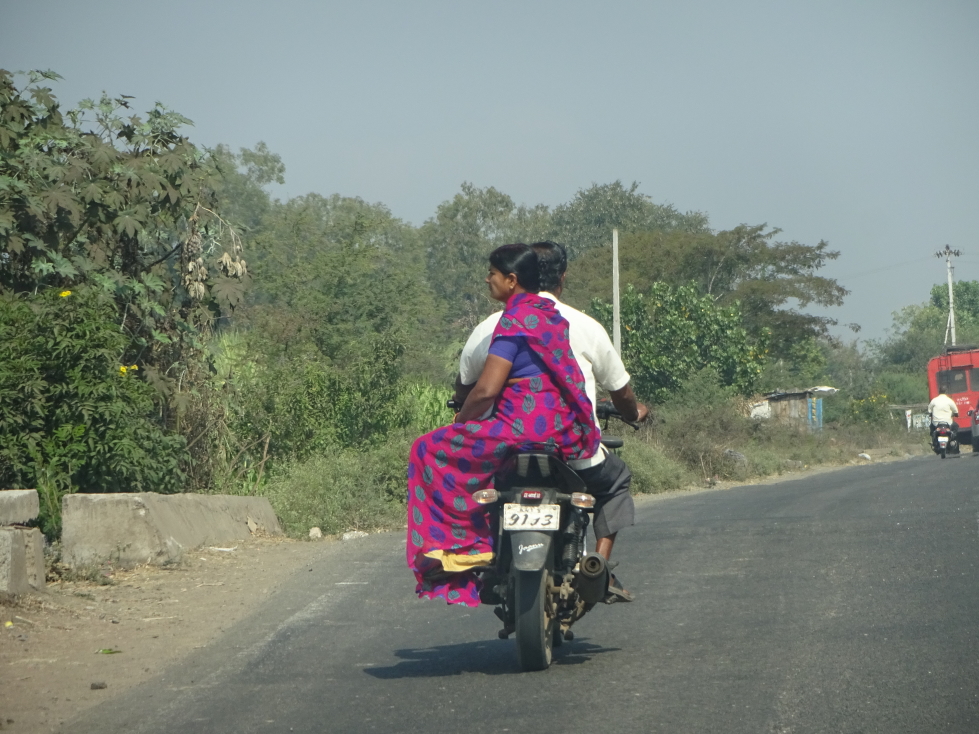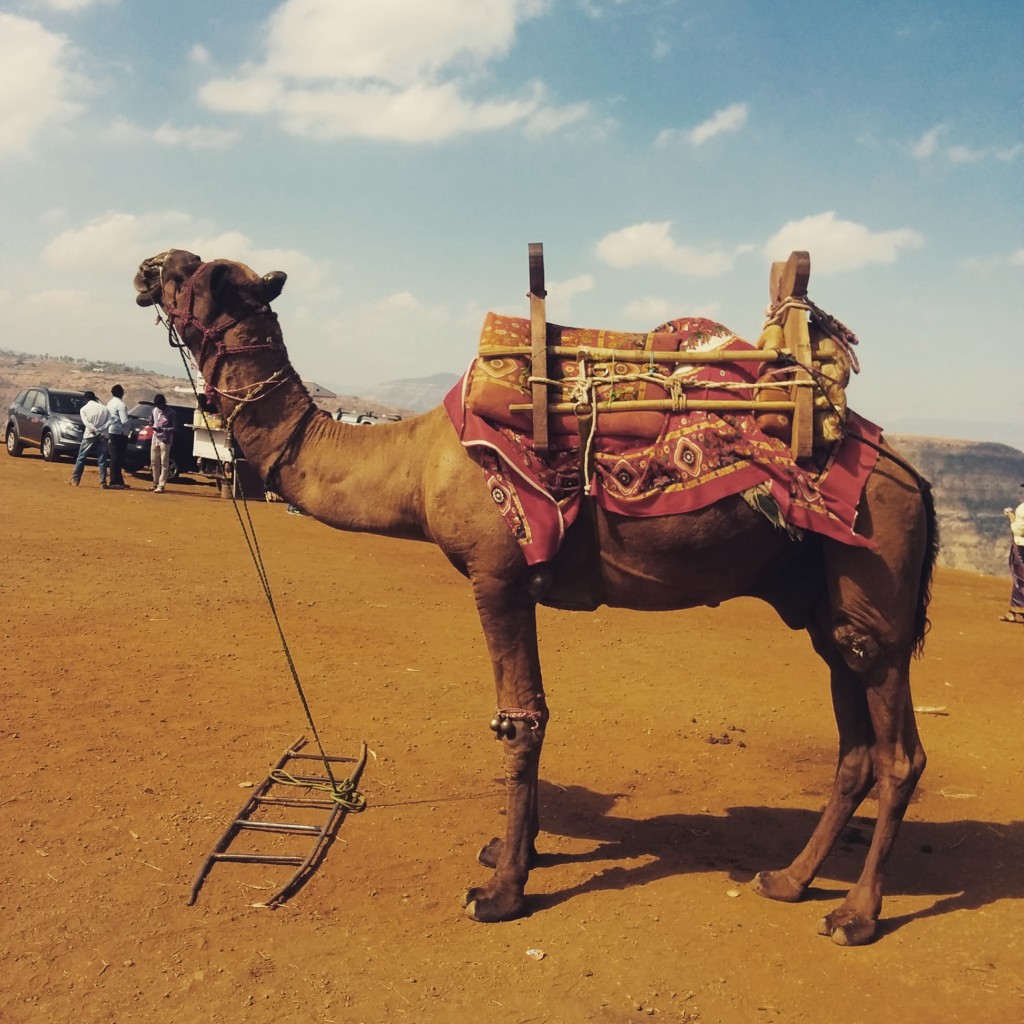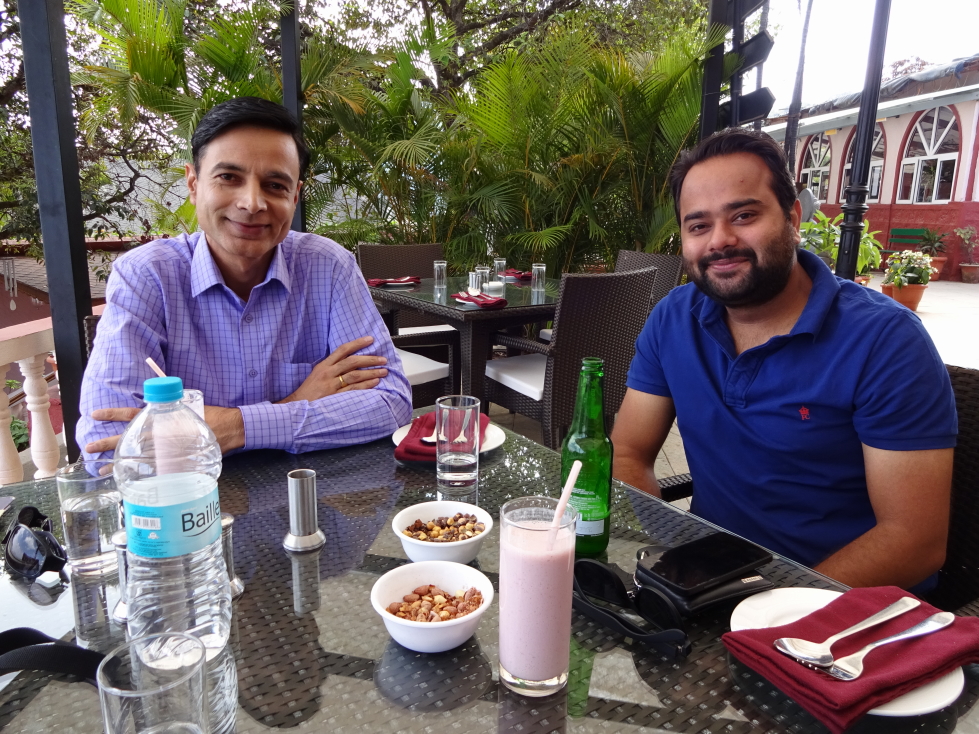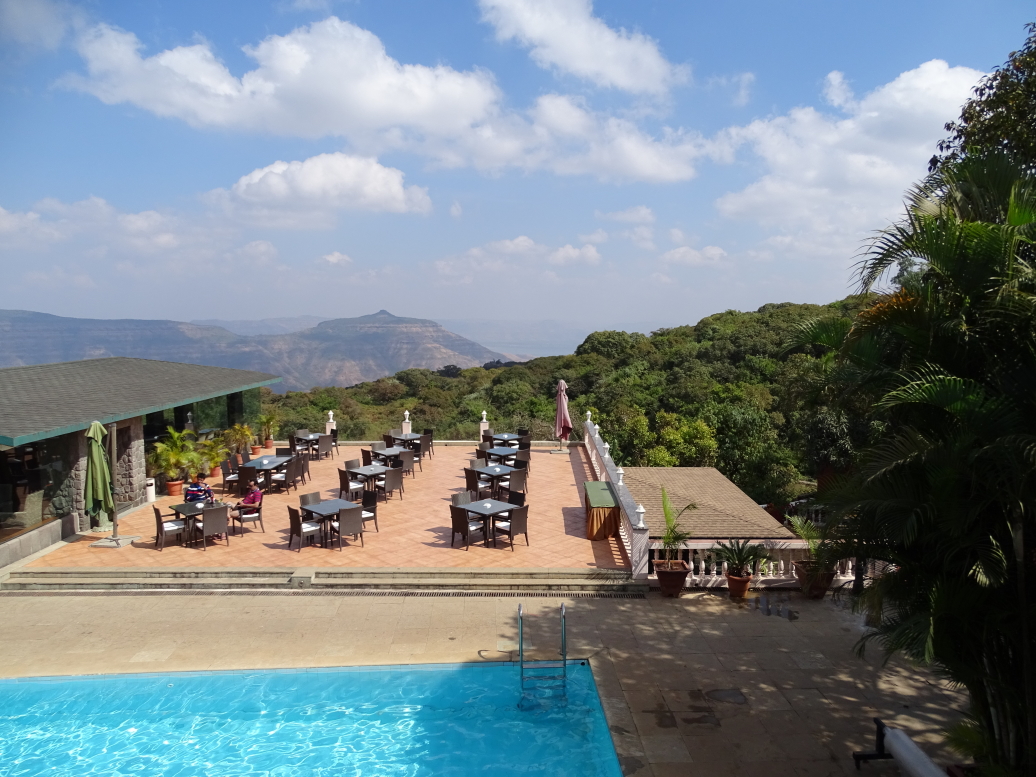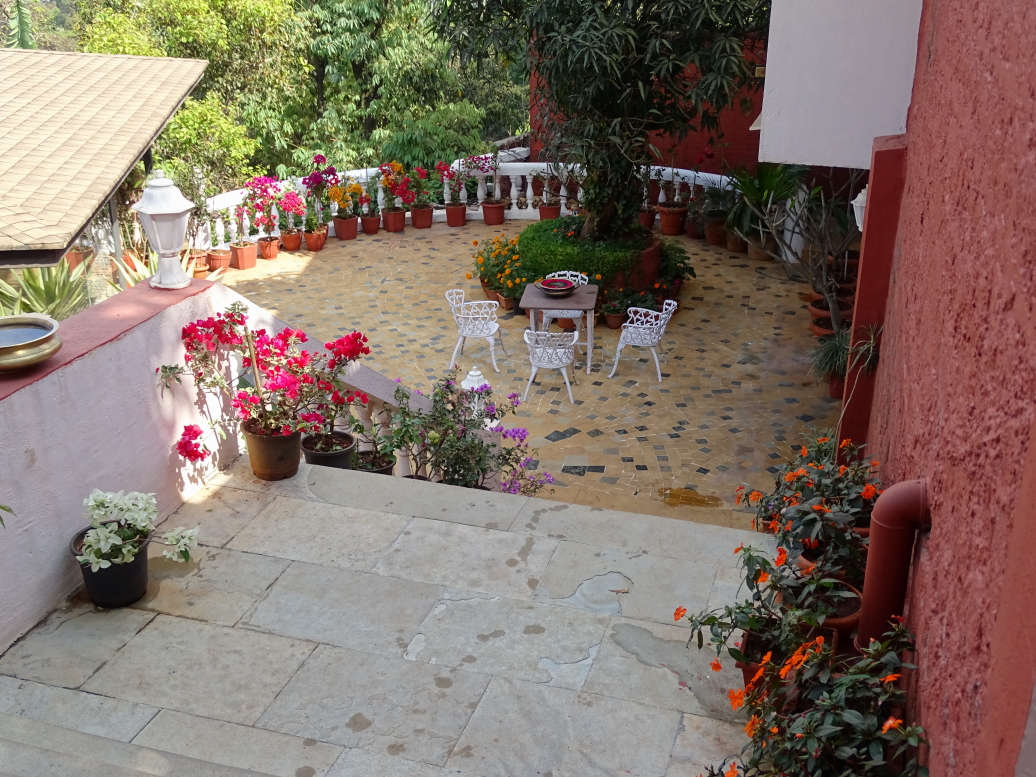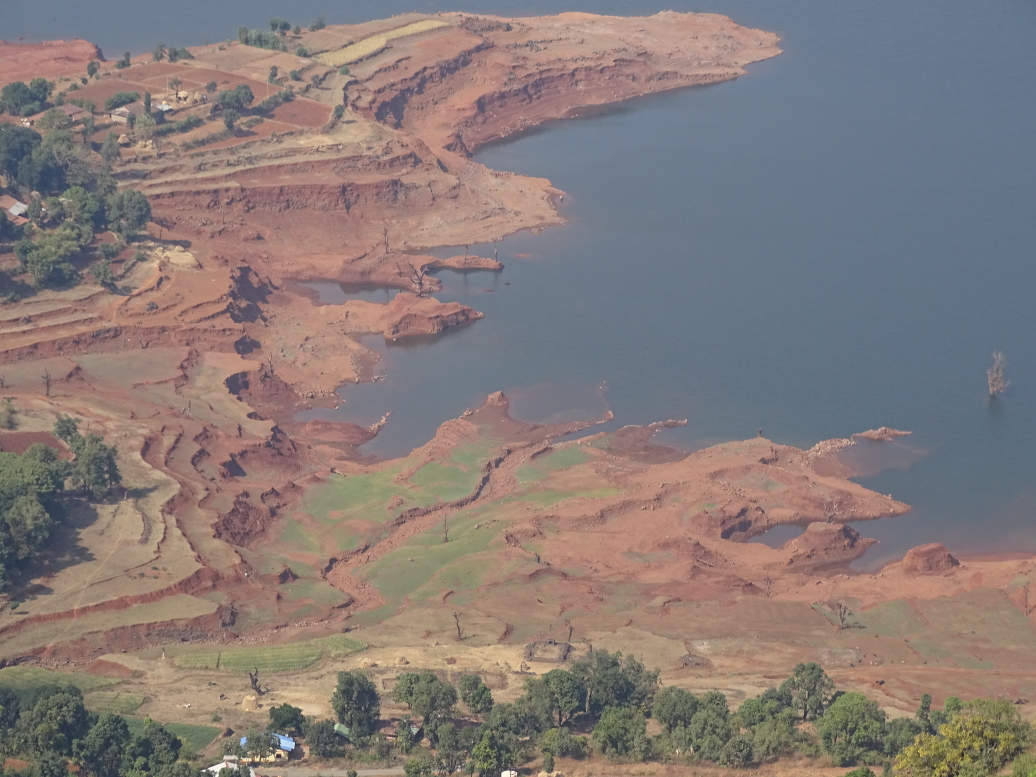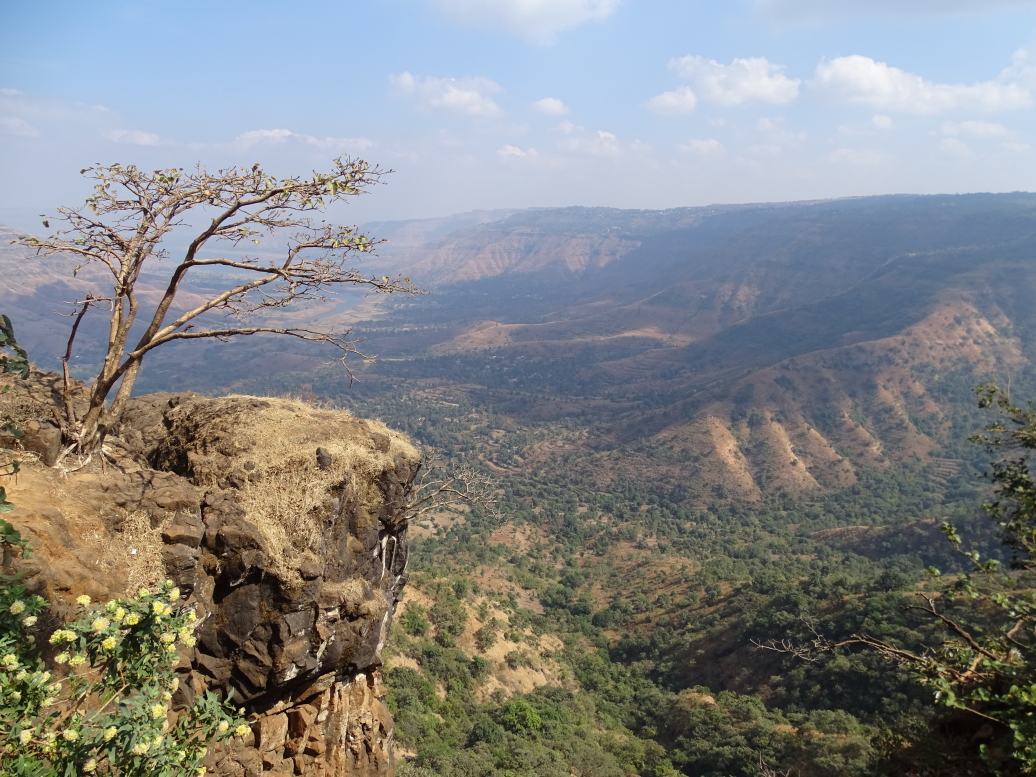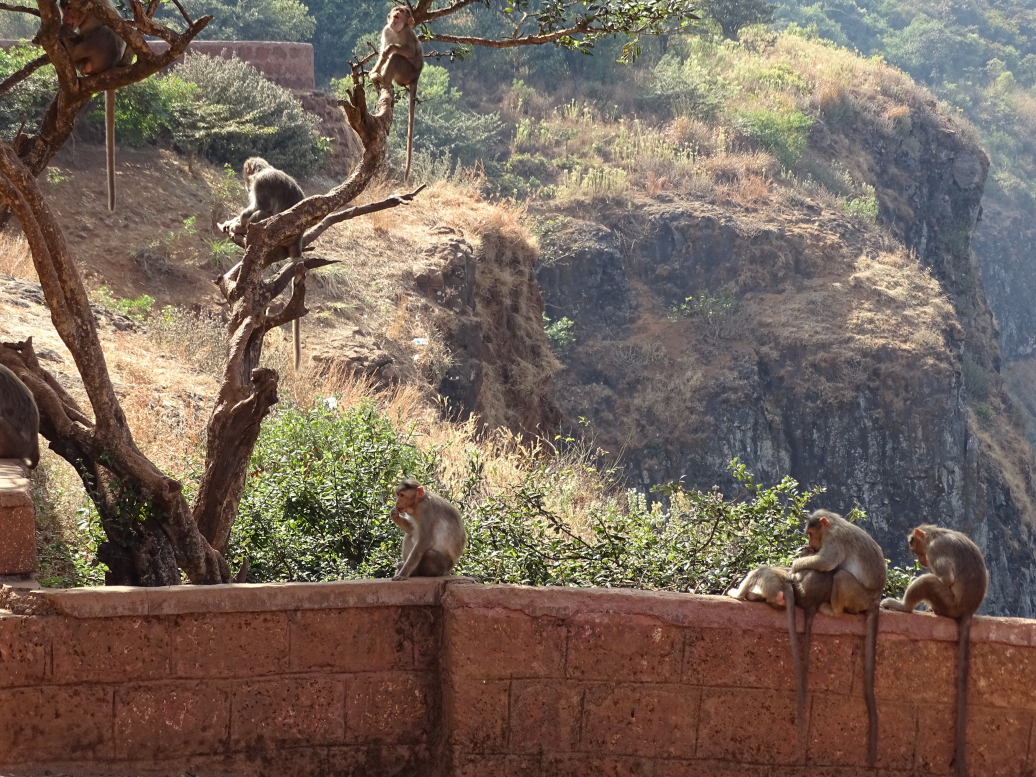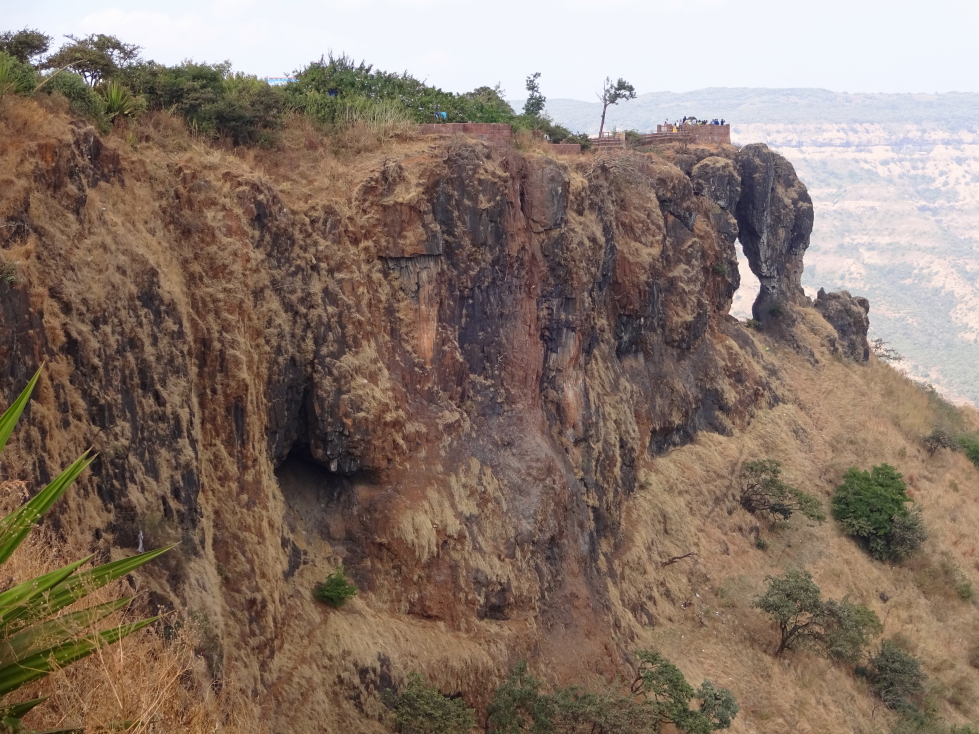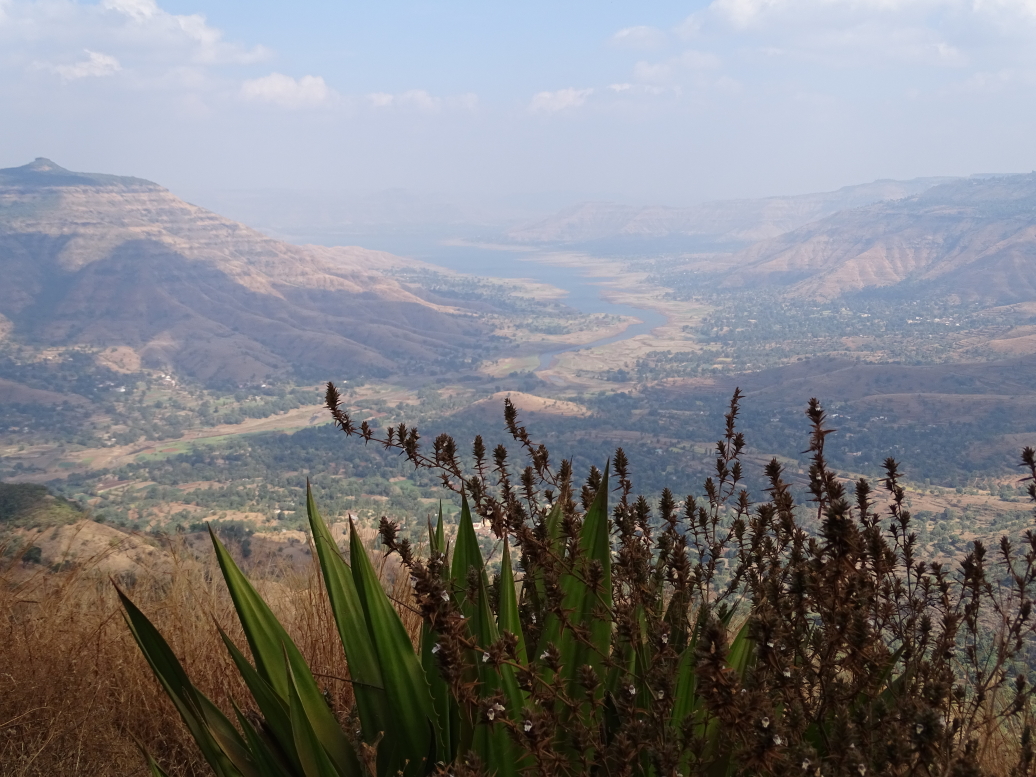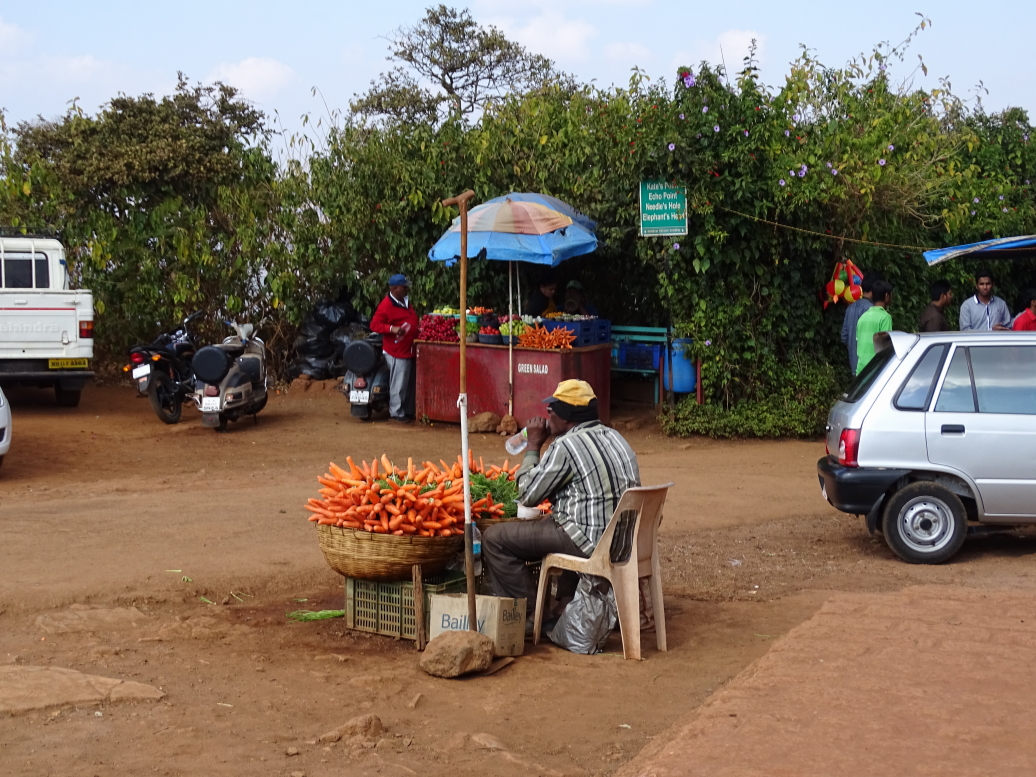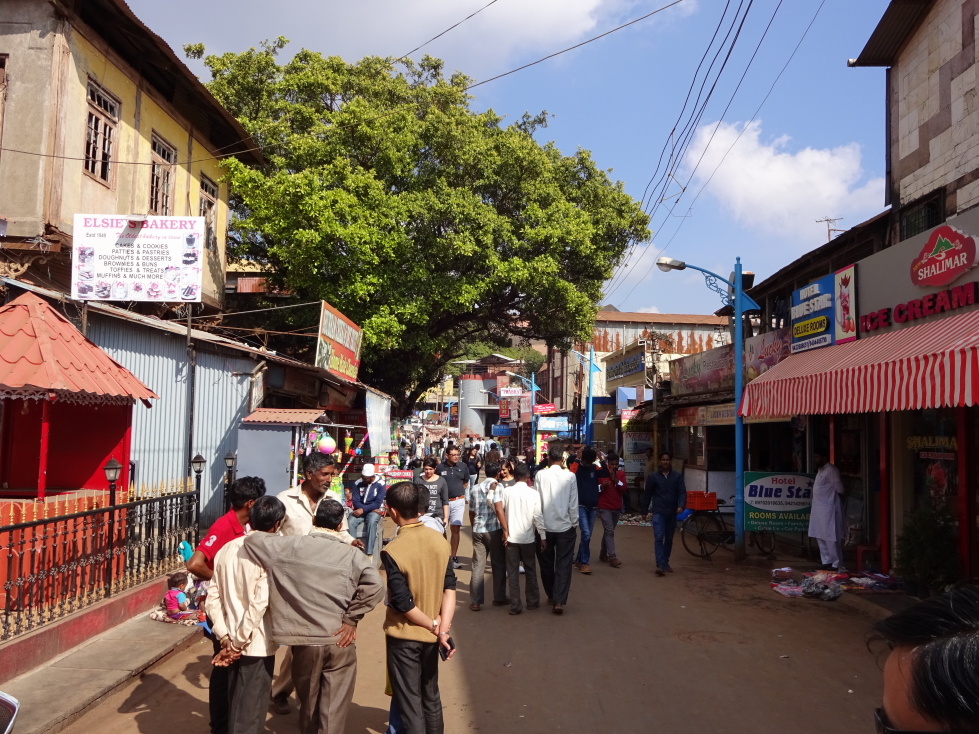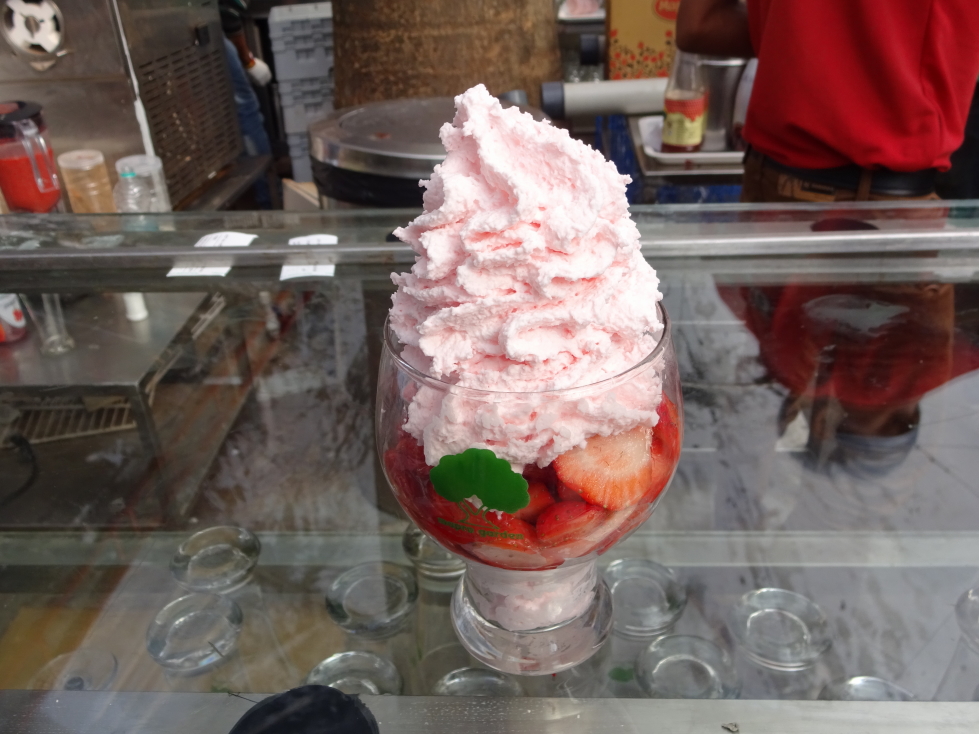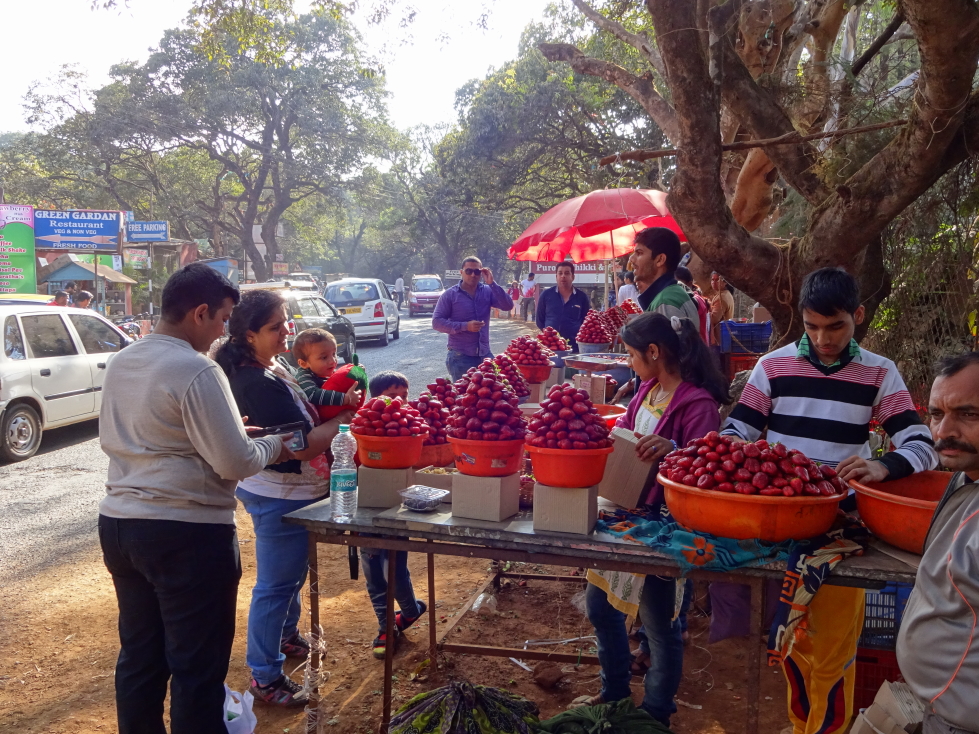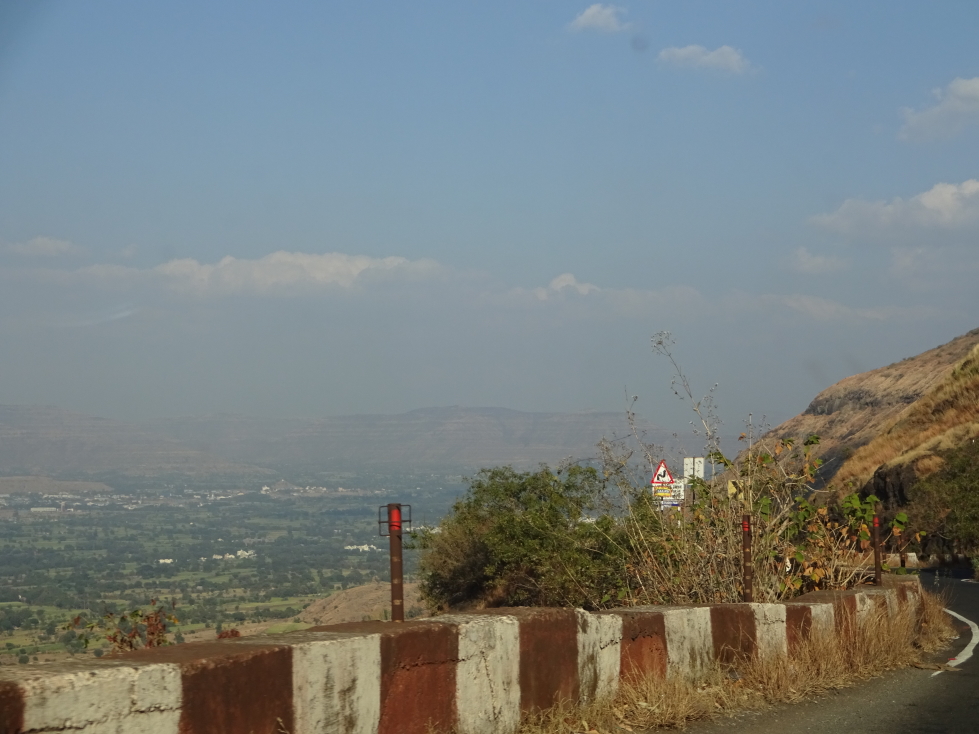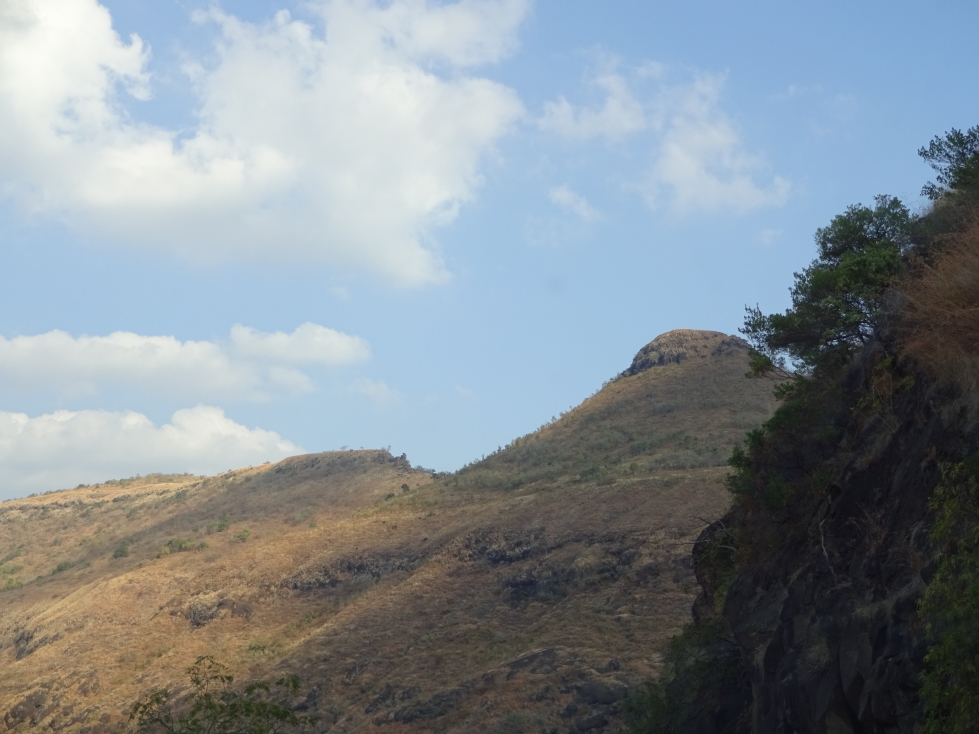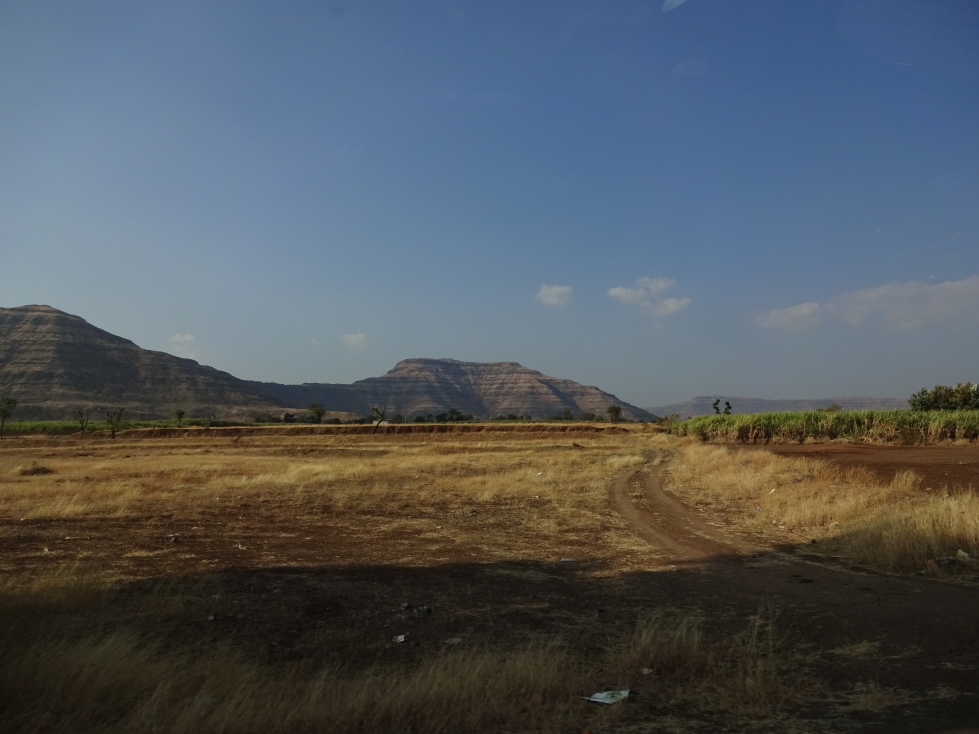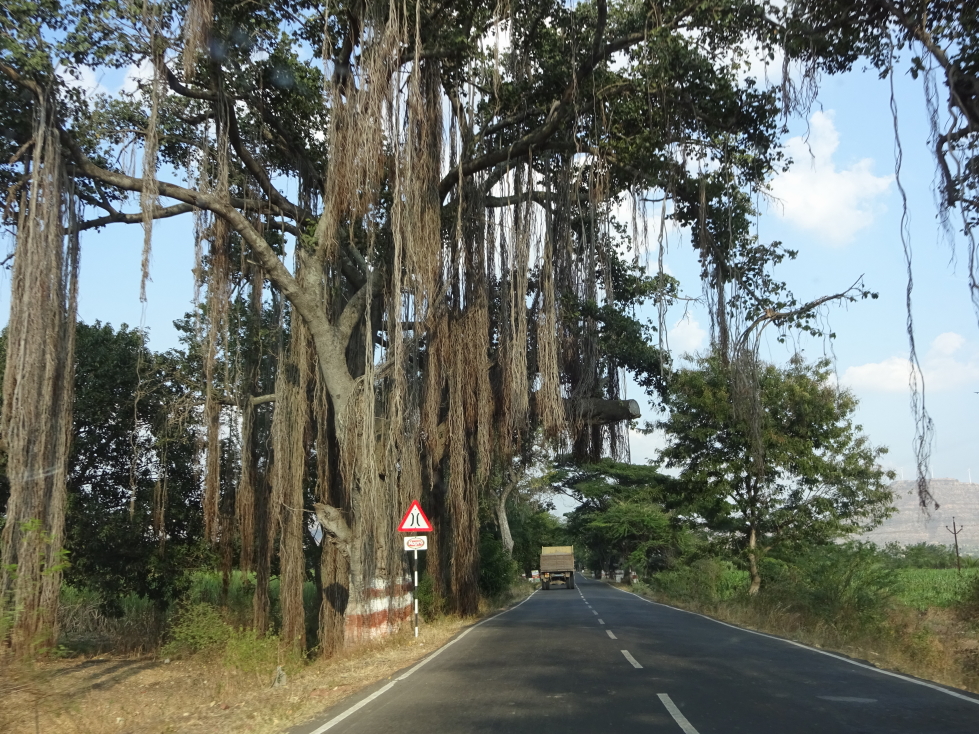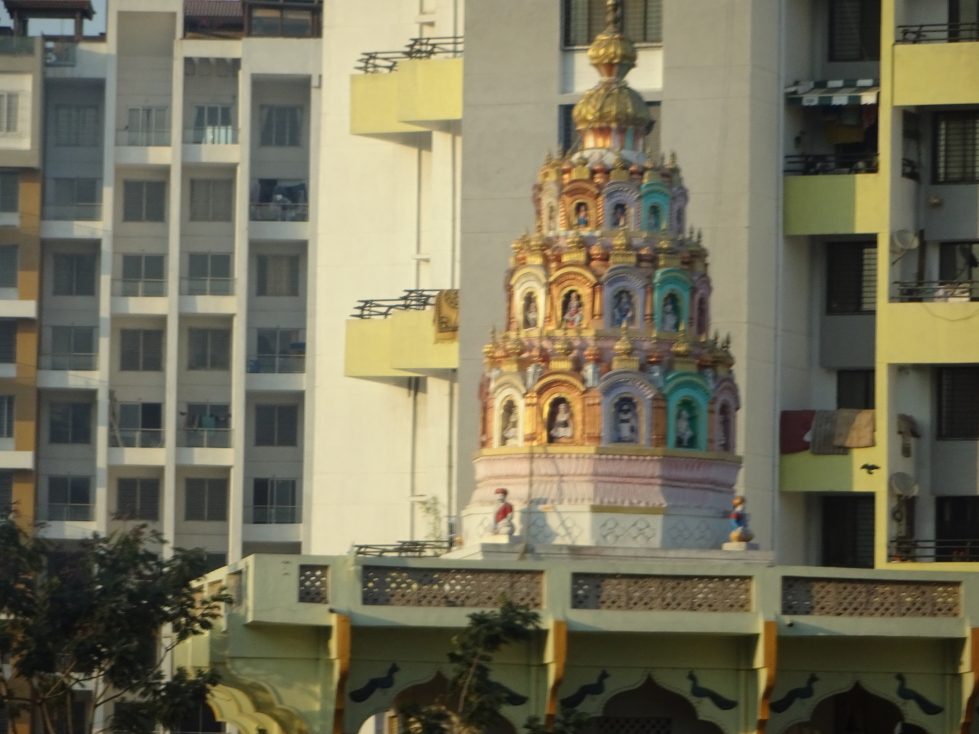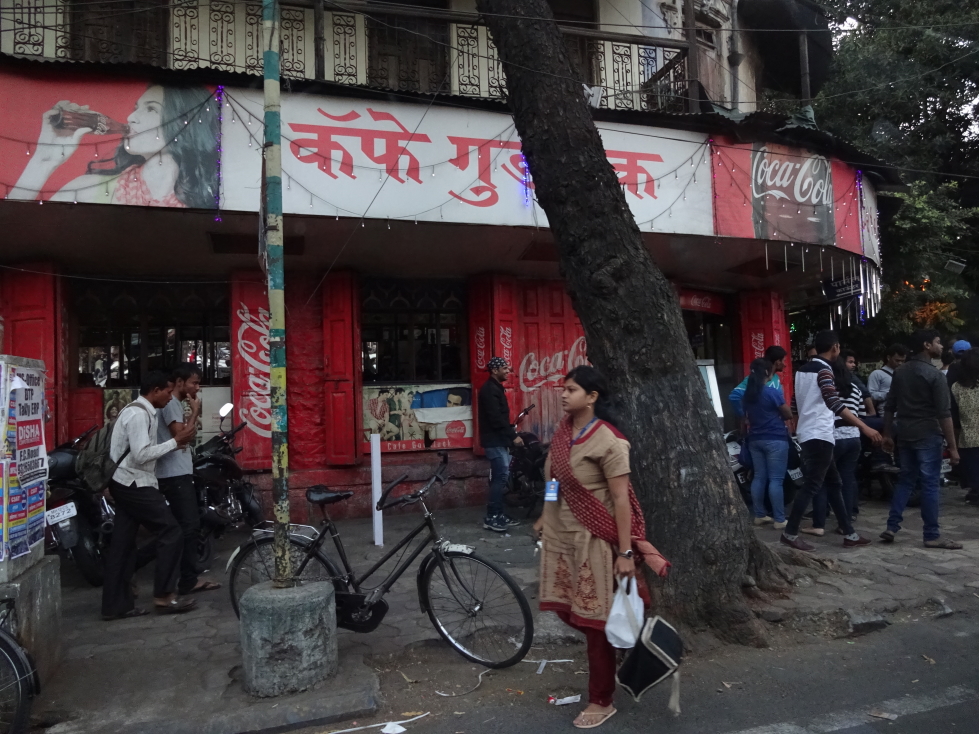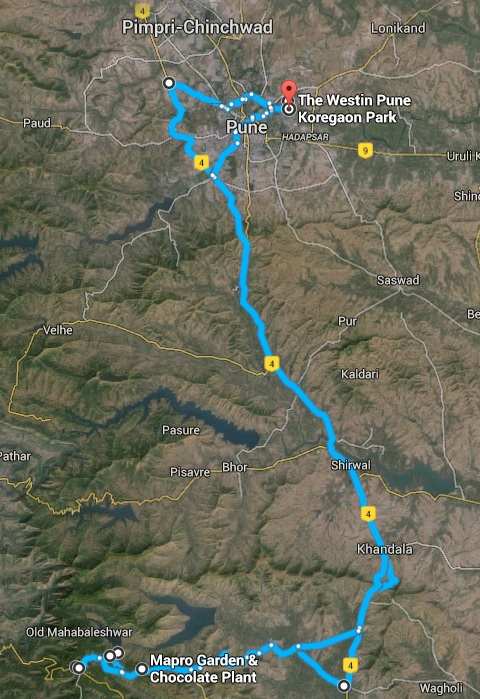After the normal morning routine I headed to work. Once there I chatted with Ravindra and Narender briefly before diving in to a full day of knowledge transfer. We ate at the cafeteria — chicken byrani and cucumer salad — with Amanpreet, Shahnaz, and Aashlesha joining us again. Once again Anshul had a cricket obligation so the remaining for of us walked Aditi Garden and talked about sport and weather (as well as the threat of a decent snow in the United States and worries of its impact on my travel — how little did I know!). Helped solve a customer issue with Anshul, Ravindra, and Ganesh and learned I needed to write a brief (four or five paragraph) article for the SAS India site about the trip. Left at 6p, blogged a bit, enjoyed a buffet dinner at Seasonal Tastes at the Westin, and prepared my presentation on the server API performance improvements for Thursday.
January 20, 2016
January 19, 2016
Movie Night!
Normal morning routine including breakfast buffet at Seasonal Tastes at the Westin. Busy morning of knowledge transfer with Anshul followed by a trip to Cafe Arabia in a nearby mall for some delicious chicken rolls (chicken, lettuce, mayo-like substance in a flat bread) followed by a scoop of coffee icecream at Baskins & Robbins, yummy! Back at work did more knowledge transfer and my presentation on performance techniques. I thought that it went far better than Monday’s — amazing what actually preparing can do!
At 6:15p I left with Anshul and his wife Pallavi to eat at JT’s Brew Works at Amanora mall. We had mostly appetizers — chicken bits, pizza, etc. Quite good. We walked to the theater to watch the latest Quentin Tarantino film, _Hateful Eight_. Anshul and I are both big fans of his work.
Sometimes it is the little things that surprise you when travelling. Seeing a movie in India was definitely one of those things. First off, the cost — 150 INR (so about $2.50) for the nicest seats I’ve ever seen in a theater — lazy boy recliners with electricly operated foot rests and a small table in front for drinks and food).
Next, prior to the movie there were not trailers. There were also no ads, just public service messages in Hindi or Marathi — I couldn’t tell — the majority of them anti-smoking. Their slogan is pretty blunt: “SMOKING KILLS”. Even their cigarette packs display those two words along with the picture of a black lung. India seems to take smoking very seriously — in fact it was banned indoors everywhere we went, something that greatly surprised me.
Another thing that was interesting to me was that the national anthem of India plays before the movie and everyone is asked to stand, hands to sides, while it plays. Anshul assured me that was in-theater only, not when it shows on TV or Netflix or the like.
Also, for this movie at least, no subtitles — just the English audio track. The patrons had no trouble following it, however, even with some of the more Southern and Mexican accents that were in the movie.
Incredibly, everytime someone on screen is smoking — whether it is a cigarette, a pipe, or what-have-you — the words “SMOKING KILLS” appear in big letters on the lower right of the screen for the entire duration the tobacco product is on screen.
A great thing about Indian movies is that, no matter the length, they have an intermission (or “interval”, as they call it)! As a younger man this may have incensed me but as an older man I appreciated the opportunity to walk around and go to the restroom. It also gave us the opportunity to buy some food (they have popcorn, pastries, candies, icecream, etc.). I had some butter pecan icecream, my second favorite flavor.
One last thing — the government censors the movies. Excessively gory scenes (of which QT is known for) are removed and some words are muted — I couldn’t quite get which ones, however, there didn’t seem to be a real pattern and the F-bombs definitely were a-OK.
The movie itself was very good. They dropped me off at the hotel where I almost immediately turned in for the night as it was 11p and I was exhausted.
January 18, 2016
Mostly Just a Day at the Office
After the normal morning routine I headed into work and talked with Ravindra. Surprise! My first presentation would be Monday afternoon and not Tuesday, a demo of the product. After a busy morning of knowledge transfer with Anshul I ate lunch with him and several of his co-workers — Amanpreet, Shahnaz, and Aashlesha. After lunch Anshul had a cricket meeting to attend so the remaining for of us took a very nice stroll around Aditi Garden.
The afternoon saw continued knowledge transfer and my demo. I felt like it could have gone more smoothly but it sounds like those in attendance got value out of it. My demos, while not as polished and customer-focused as Amy’s, tend to be a bit more driven by quirky bits and pointing out things for testers to try out and the like. Afterwards did yet more work with Anshul.
Headed back to the hotel at 6p and worked on my presentation on performance techniques used in the product to be delivered tomorrow. Afterwards headed down to the buffet at Seasonal Tastes (yeah, I’m boring).
January 17, 2016
Sight-seeing in Pune
Awoke fairly late and got my standard breakfast buffet. I debated heavily whether I should try and see the local sights in Pune or just stay at the hotel and relax, maybe get some work done, and generally recover from a very busy first week at work and the great (but tiring) visit to Mahabaleshwar the day before.
In the end I decided to suck it up and see the sights, I knew I’d regret coming all this way and wasting one of my two weekend days milling about the hotel. I hired a driver for the afternoon from the hotel. He spoke some English, enough that we could communicate well enough. He was forty, so near my age, and was working hard to put his kid through school. To my shame, however, I was unable to catch his name (I tried, I just couldn’t quite get it and attempts to ask him to spell it weren’t understood), so I’ll just refer to him as my driver or the driver. Alas.
We first crossed the Mula Mutha river and visited Aga Khan Palace. Built in 1892, the palace is most famous as the place where Gandhi, his wife Kasturba, and his secretary Desai were interred by the British during the early 40s. Inside the buildings’ first floor rooms are a statue of Gandhi and Kasturba, personal effects, and many descriptive displays about their lives and efforts to fight for the rights of Indians (and eventually independence when it was clear the British were not interested in equality). While a beautiful building and the grounds have amazing plants and flowers, it is a somber place as both Kasturba and Desai died while here. Both of their ashes are found on the ground, in monuments each with a tree growing out the top. Gandhi would later be assassinated (coincidentally by a Hindu nationalist from Pune) and his ashes placed here too, in a similar monument. In the 1960s Aga Khan Palace was given to the people of India by its owner in recognition of its importance to the country’s history.
I had trimmed the list of sights I wanted to visit to three: Aga Khan Palace, Shaniwarwada (an impressive fortification), and Parvati Hill. I really wanted to visit Pataleshwar Cave as well but I thought it too ambitious. Imagine my surprise when the driver stopped and I realized we were there. It is like he read my mind (or, more likely, thought it was a really cool place to see and that I shouldn’t miss it — and he was right in that regard).
Pataleshwar Cave is an 8th century rock-cut temple to Shiva. It was actually carved into the rock but with such precision with beautiful pillars and the like it looks as if it was built by stacking cut stones. It was left unfinished, however, when a pretty serious cleft was found running through the rock. The site consists of two parts, a circular stone roof over a statue of Nandi (Shiva’s bull mount) and, beyond, the entrance to the caves. After taking of our shoes we headed into the cool, dark temple. The middle of the cave consists of a few rooms, the middle one containing an idol to Lord Shiva. Completely surrounding this middle room is a pillared walkway (though as I stated before some of it was left unfinished). As with other temples I had seen a bell hung near the idol. As my driver and I walked around the cave we could here the bell ringing periodically as worshipers came to pay their respects. Outside was an amazing centuries-old banyan tree.
Heading back to the car we drove back over the river and saw an impressive old stone bridge paralleling ours. Now we were in the heart of Pune, the oldest section. Some of the buildings looked old indeed, replete with wooden balconies similar to those seen in the first Assassin’s Creed game. Really nifty.
Shortly we came to Shaniwarwada, an impressive fortification built by the Peshwas (rulers of the Maharashtra Empire) in the 1730s. In front of the very foreboding gatehouse (complete with massive doors festooned with iron spikes) was a temple and a statue. I’d love to have gotten a picture of the statue from the front but the driver was waiting on me and as the place was packed I didn’t tarry. I headed into the fort, paid my 100 INR (as opposed to far less for Indians — but 100 INR is still only less than $2 so a very fair price), and walked around the grounds. As it was so crowded it was a bit harder to appreciate than Aga Khan but it was neat nonetheless. While the walls and the gates were intact (including some interesting wooden balconies and arches) the middle of the fort had been reduced (by fire in 1828) to its foundations. There were also fountains (not turned on, however) and nice stands of trees.
Exiting the fort I met up with the driver and we headed to another destination. Like Pataleshwar, this one was not on my list. Though Ravindra had highly recommended it the day before I feared a visit to the Kelkar Museum would take too much time. Again, I was very fortunate that my driver took me here. An amazing collection of Indian artifacts, mostly from the 17th through 19th centuries. Idols, puppets, combs, furniture, instruments, armor, weapons, lamps — you name it, it’s there. My driver went through the museum with me and we admired the vast collection, him reading some of the Hindi labels.
Leaving the museum he stated it was 3p (we started at noon) and he was getting tired and should skip Parvati Hill. We started back to the hotel but I really wanted to see Parvati Hill and asked if we could still go and that I was OK doing the 103 steps to the top by myself if he was too tired to do so. On the way to the bottom of the hill we passed an impressive temple to Ganesh but I was unable to snap a photo quickly enough. We also passed some interesting architecture and a small shrine to Ganesh with the Ohm mantra above the entryway.
Arriving at Parvati Hill (and somehow squeezing the fairly large hotel car into a tight parallel parking spot) I could see why he wasn’t relishing doing the climb up Parvati Hill. It isn’t 103 traditional steps, but rather a step then about 15 to 20 feet of a 15% slope then another step. Not cool, not cool at all! He insisted on going with me still, however, and took off his hotel-mandated driver’s coat and grabbed some bottles of water for us. It was a pretty strenuous climb up, however it was made pleasant by increasingly beautiful views of Pune and the surrounding hills and the presence of goats and wild dogs along the path made it very entertaining.
After several stops to get our breath, drink some water, and chat a bit (mostly about how it isn’t *really* 103 steps) we reached the top. Atop this hill (second highest in Pune) sit several temples, including the one we were visiting to Shiva and Parvati. Next to the temple was a museum displaying many items from the Peshwa period (1700s) like coins, everyday objects, etc. There was a really neat map that I was able to discern the different colored regions due to my knowledge of history and maps — the British state at Bombay, the Portuguese at Goa, the Maharashtra. A bystander commented how rare it was that someone understand his language, much less read it. I came clean about that, however! Also saw some chipmunks scurrying about in the courtyard outside.
Back outside my driver spoke about Shivaji. Luckily as Anshul had talked about him on Saturday I was able to have a conversation about him — that was a neat moment and I think the driver appreciated it. Next we proceeded into the temple’s courtyard (after taking off our shoes, of course) and climbed up the walls that define the courtyard to enjoy the view not only of the temple but of Pune and its environs. I nearly banged my head on the low-hanging arch and was very careful not to fall the 10+ feet to the courtyard below (no railings here, folks!) — particularly dicey with small bits of iron studding the walkway.
We headed back down the 103 steps to the car, heading back toward the hotel. He pointed out Laxmi Road, the prime shopping street of Pune, and we stopped at a shop. He told me to hold off on buying anything but I saw something Michelle would like and went for it. I didn’t try to bargain (and was told by Anshul the next day that shops like that generally don’t) and I think the driver was a little exasperated that I ended up buying something haha. Made it back to the hotel at 5p. I gave him a nice tip — he had, after all, spent five hours with me and went to most of the sights. And no, I didn’t expense the tip or the cost to hire the driver — that’s on me.
Later that evening I ate the buffet at Seasonal Tastes and headed to bed, knowing that the week ahead would be filled with work and three presentations (I was thinking on Tuesday, Wednesday, and Thursday).
January 16, 2016
Breathtaking Vistas and… MONKEYS!
Woke up early (for a Saturday) and re-arranged my bags so that I had all of the stuff needed for the trip to the mountains southwest of Pune in my backpack. Proceeded down to Seasonal Tastes for my (now) traditional breakfast buffet but went a little light as I knew that Ravindra and Anshul intended to get breakfast on the way to our destination. Anshul showed up shortly after 8a and we set off through Pune, first stopping at a Starbucks for some coffee then continuing on to pick up Ravindra farther west in Pune. We had some difficulty locating where we were to pick him up so Anshul just pulled the car over and asked directions of someone on the side of the street. It amazed me this first time I saw him do it, and subsequent times, as the people he asks are always very helpful and do not seem the least bit bothered — a bit different than the reception I’m used to in the US. On the other hand, there is a decided lack of people out and about on the streets (that aren’t in cars) so it’s not like it is very feasible to begin with…
We picked up Ravindra and proceeded out of town. Along the way there was a bridge under construction. The scaffolding system seemed different than what we have in the US, more like small (a couple of feet) iron rod boxes stacked and welded together. The traffic lightened up a bit and we were able to increase speed a bit more as we hit NH4 (National Highway 4) heading towards Satara. Even in this early going there were hilly sections and the mountains could be clearly seen in the distance. The National Highways, at least this one, were a bit below US Interstate highway classification as roads joined it rather than having ramps to get on and off. Anshul informed me that the Mumbai – Pune Expressway was closer to our interstates and, additionally, do not allow two-wheelers (of which there were a good number on the highway, even far out of Pune).
After a short interval in the hills (including seeing a couple of monkeys perched on a sign — blink and you’d miss them!) we stopped at a roadside restaurant called Vithal Kamats. Solid travelling food, think something like a Bob Evans or something. I had a large plain (sadha) dosa, a rice-based crepe, that was perfectly crisp, I tore it up and dipped it with some accompanying sauces that were slightly sweet. One was coconut-based chutney so I favored the other one. The billboards for Kamats are awesome, a drawing of the founder Vithal Kamat holding up his hands in an “ok” sign — and they are everywhere.
After another flat stretch (with the Western Ghats looming ever larger) and a couple of toll booths and a missed turn we passed through a few villages (again our travels helped along by directions given by friendly locals). I saw corn and sugar cane, lots of pretty rural lanes shaded by banyan trees, women perched with amazing balance side-saddle on the back of motorcycles, and lots of domesticated animals — bulls with painted horns, goats, the ubiquitous wild dogs, etc. Very pretty countryside.
We finally reached the steep ascent into the mountains, a twisting one lane road (thankfully one-way). As with my prior experience with Indian roads, however, the one lane road was merely a suggestion, Anshul very skillfully would give a honk and go around (on the right — everything is reversed) slower trucks and cars. Motorcycles had the best mobility in this regard, but Anshul’s Renault Duster did just fine. Ravindra pointed out that as the standard of living has risen for many Indians car ownership, and the ability to pay for short excursions, has risen as well — leading to increasingly busy roads to local getaway spots.
Speaking of horns, they aren’t used in anger like in the US. Well, sometimes they are, sure, but most of the time it is a “hey, I’m passing” or “hey, I’m coming down the road so don’t dart in front of me” (useful in residential areas with children) or “hey, I’m here” (used around trucks that may have blind spots). Anshul said that his horn was broken for two days once and it was miserable. I can believe that, he (and everyone else) uses it more in fifteen minutes than I have over the entire time I’ve been driving — I’m not kidding! Another difference is flashing lights doesn’t mean “hey, go ahead and pull out in front of me.” It means “I’m here, I intend to keep going past so don’t pull out in front of me.” Yikes, that’d have been bad if I were trying to drive here.
While I referred to the area we visited as mountains that’s not entirely true. It is more like an eroded plateau, like the badlands of South Dakota — the tops are all flat and the slopes are due to erosion, not uplifting. If that makes sense. Anyhow, after a short interval we turned off the pavement and on to a dusty road that had quite a few cars and people and even a camel for tourists to ride and a few stalls selling stuff. According to Google Maps this point is known as Harrison’s Folly. What a view! We were careful to stay away from the edge as it was a bit loose and crumbly.
Returning to the car we drove further along the ridge tops and into a more forested area. We stopped at a place called Brightland Resort & Spa for lunch. We ate at a table in an outdoor courtyard overlooking a pool and a bar and beautiful flowered courtyard below. Beyond that the heavily forested hillsides descended into the valleys below. Several large birds were circling — many feet of wingspan. We had some delicious appetizers and meal including garlic chapati (flat bread) and some amazing chicken. I learned that morgh is the word for roosters and morghi for hens.
We turned left out of Brightland and quickly took another left into a forested lane. A short distance later we emerged at an area with several points — Kates, Echo, and Needle. The view, once again, was spectacular, famous for its view of two reservoirs. But that’s not the best part! There… were… MONKEYS! The fleeting glimpse earlier in the day didn’t really count, it was such a fleeting encounter. But this, this was a troop of legitimate wild (well, relatively) monkeys! Ravindra urged me to keep a firm hold on my camera — sound advice. One monkey got behind an elderly woman and was trying to take something out of her hand behind her back, startling her.
Anshul disappeared to buy some fresh carrots. They were tasty, we gnawed on them as we strolled to Needle Point from which we could see that the point we had previously visited was a cleft rock that looked like a needle. Or an elephant, if you squinted hard enough. Really beautiful and I enjoyed seeing so many exotic plants I’d never seen in the wild (though I couldn’t tell a thing about them, that’s my brother’s area).
After heading back to the car we drove down past a small lake named Venna Lake. It had a boating club, many boats, and a large apparatus spraying cooling mist onto the boaters. We found ourselves in Mahabaleshwar shortly, a charming town with a busy market row that Ravindra and I (later joined by Anshul after he parked) strolled down. I (assisted greatly by Anshul’s bargaining skills) ended up buying a gift for my family (product and intended withheld so as to not spoil the surprise).
Next up after Mahabaleshwar was Mapro Garden on Panchgani Road, a place known originally for its delicious strawberries but later for its chocolate, sandwiches, and brick-oven pizzas. It and Mapro Factory are a popular stopover for tourists. I enjoyed a fresh strawberry with cream — well, a bit more than that — strawberries, some strawberry syrup, whip cream, and ice cream. It was fantastic! Ravindra had a strawberry milkshake and Anshul opted for a coffee one. Afterwards Anshul and I waited for Ravindra to finish up some shopping and stood near the many strawberry stands that were in front of, but not affiliated with, Mapro. One interesting thing about the area was most street signs (like stop signs, speed limit, etc.) were sponsored by Mapro or its competitor Mala’s.
Mahabaleshwar is famous for its strawberries (and other berries like mulberries, raspberries, and blueberries) and we visited at the perfect time as it was the height of the season for them. In addition to berries Mahabaleshwar exports lots of honey as well to other areas. Mahabaleshwar’s climate is ideal for berries and its climate a bit cooler — the area has one of India’s few evergreen forests. This climate also led the British to use Mahabaleshwar as the summer capital of Bombay province during the British Raj. It is hard to imagine the difficulty faced moving the apparatus of government through such thick forest and so far up the mountains. Such mountain retreats offering cool respite from the summer heat below are known as hill stations.
On the way back to Pune Anshul played some excellent Hindi music and music by a famous Indian film composer (he did the music for Slumdog Millionaire, even). The drive back was fairly uneventful, though we did see a large truck that had overturned in a ditch. Anshul informed me that truck drivers often cheat sleep in order to maximize their hauls. I also started playing a variety of the license plate game — we found eight of India’s 29 states. I learned that trucks are licensed to particular states or could have a national permit that would let them cross state boundaries. Anshul also told me about Shivaji, a hero (think George Washington… but more so!) in Maharashtra that drove out the Mughals in the late 1600s. Though not particularly strong he was a very cunning general, a brilliant tactician. Decals of him in white and orange decorate many of the cars in Pune.
We missed the turn into Pune and ended up skirting the western side of town, passing a small deep blue lake surrounded by high-rise housing. Once in Pune proper the traffic picked up substantially. After dropping Ravindra off Anshul and I headed to Bounty Sizzler, a restaurant just across the river from the Westin. The food was very good, basically some vegetables (green beans, peas, mushrooms, onions, etc.) along with chicken and fries and some dark brown gravy brought on a searing hot iron skillet. Delicious! Interestingly beef was on the menu but Anshul pointed out that it was an old menu as Maharashtra had banned the serving of beef. During our meal two cats started loudly meowing, reminding me a bit of that time in Egypt — thankfully no cat hair drifting onto our food this time around!
After dinner Anshul had a minty leaf with some sweet paste and other goodies wrapped within. He just popped it in his mouth in one go. I was tempted to try it but as my stomach had been a little iffy I opted to pass. Got in the car and was dropped off at the hotel. Headed to bed exhausted shortly thereafter. What a fantastic day, it was great seeing a very different part of India!
